How Much YouTube Pays For 1 Million Subscribers
Is 1 million YouTube subscribers enough to make a living? Explore how YouTubers earn through ads, sponsorships, merchandise, and more. Learn key strategies to maximize your income and turn your channel into a full-time career.
How Much Can You Earn with 1 Million YouTube Subscribers?
Reaching 1 million subscribers on YouTube is a huge achievement, but how much money does it actually bring in? The reality is that earnings can vary dramatically based on several factors, including content niche, ad revenue, and additional monetization strategies. While some creators with this milestone earn six figures annually, others may struggle to generate a stable income.
How YouTube Monetization Works
YouTube pays creators primarily through ad revenue via the YouTube Partner Program (YPP). To qualify, a channel must have at least 1,000 subscribers and 4,000 watch hours in the past year or 10 million Shorts views in the last 90 days (which we have previously talked about how to get 1,000 subscribers and how to reach 4,000 subscribers). Once monetized, earnings come from:
- AdSense Revenue - Earnings from display, overlay, and video ads.
- YouTube Premium Revenue - A share of subscription fees from YouTube Premium users.
- Super Chats & Stickers - Viewer donations in livestreams.
- Channel Memberships - Monthly subscriptions for exclusive content.
- Merchandise & Sponsorships - Additional income sources beyond YouTube's built-in monetization.
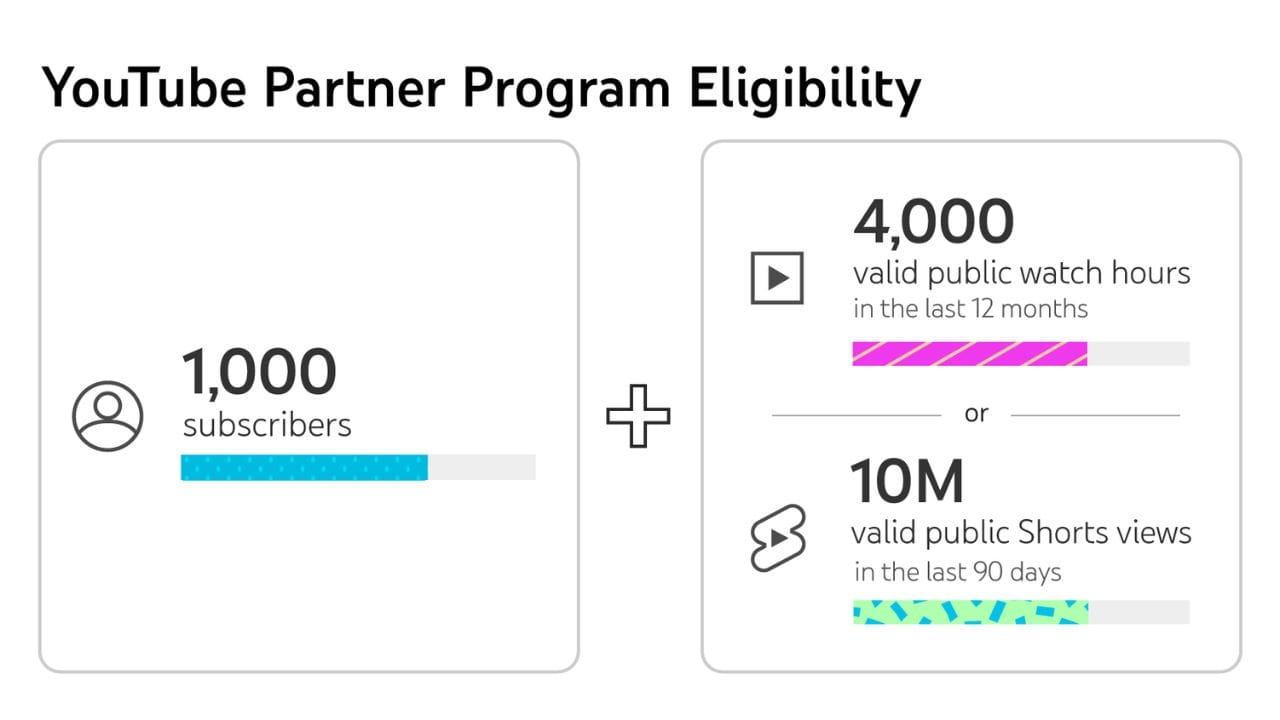
Key Factors That Impact YouTube Earnings
Subscriber count alone doesn’t determine revenue. A creator with 1 million subscribers who gets millions of views per video can make far more than another with lower engagement. Here are the biggest factors influencing earnings:
- Niche & CPM (Cost Per Mille) - Advertisers pay more for finance, business, and tech content compared to gaming or vlogs. Finance channels can have CPMs of $20-$40, while gaming channels often fall in the $2-$5 range.
- RPM (Revenue Per Mille) - The actual revenue per 1,000 views after YouTube’s 45% cut. A gaming channel might see an RPM of $1-$2, while a finance creator could earn $10-$20 per 1,000 views.
- Watch Time & Retention - Longer videos with high watch time and multiple ad placements earn more.
- Geography & Audience Demographics - Viewers from high-income countries like the U.S., Canada, and the U.K. generate higher ad revenue.
- Video Upload Frequency & Engagement - More videos and strong engagement lead to higher earnings.
What to Expect: Real Numbers & Examples
A YouTube channel with 1 million subscribers typically generates anywhere from 500,000 to 5 million views per month, depending on content style and audience engagement. Estimated ad earnings:
- Gaming Channel (RPM $1.50) → $750 - $7,500 per month
- Tech Reviews (RPM $4.00) → $2,000 - $20,000 per month
- Finance (RPM $15.00) → $7,500 - $75,000 per month
- Lifestyle & Vlogs (RPM $2.50) → $1,250 - $12,500 per month
Beyond AdSense, many creators make additional income through brand deals, affiliate marketing, and selling products. Some top YouTubers earn well over $100,000 per month, while others with the same subscriber count struggle to make $5,000.
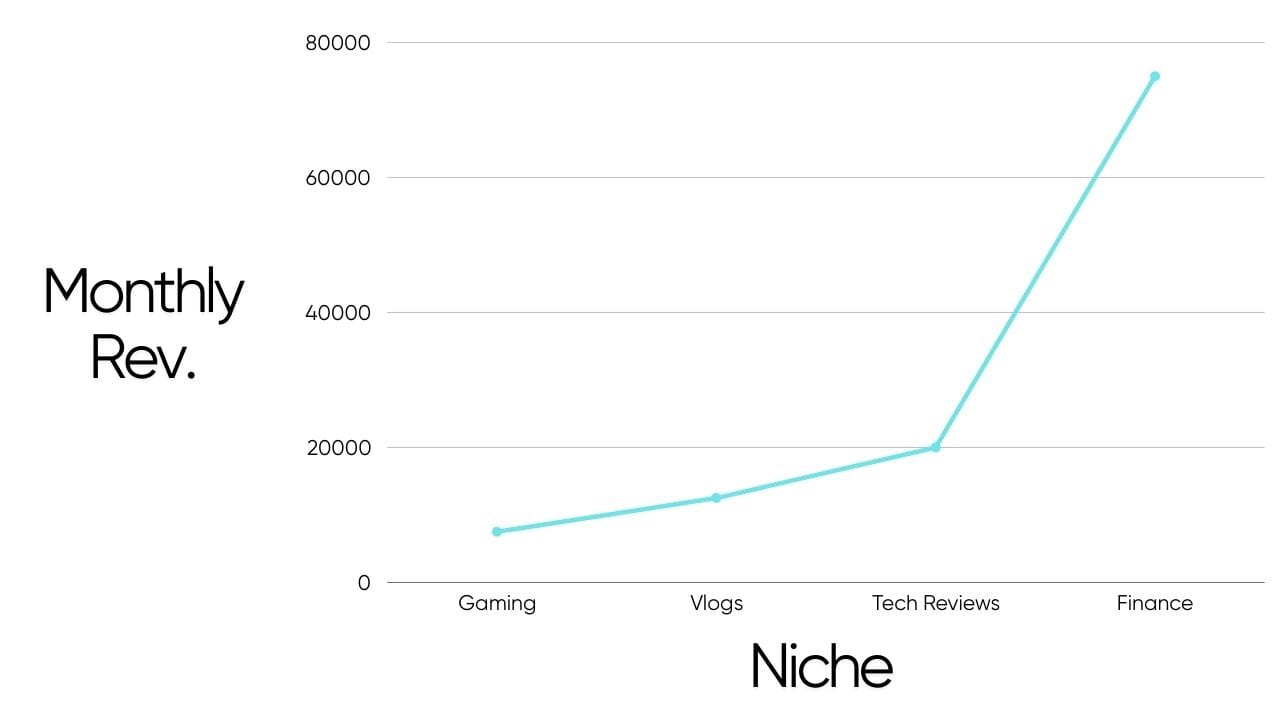
Understanding these numbers helps set realistic expectations for how much money 1 million subscribers can bring in. Next, we’ll explore YouTube’s monetization model in more detail and break down exactly how creators get paid.
Understanding YouTube’s Monetization Model
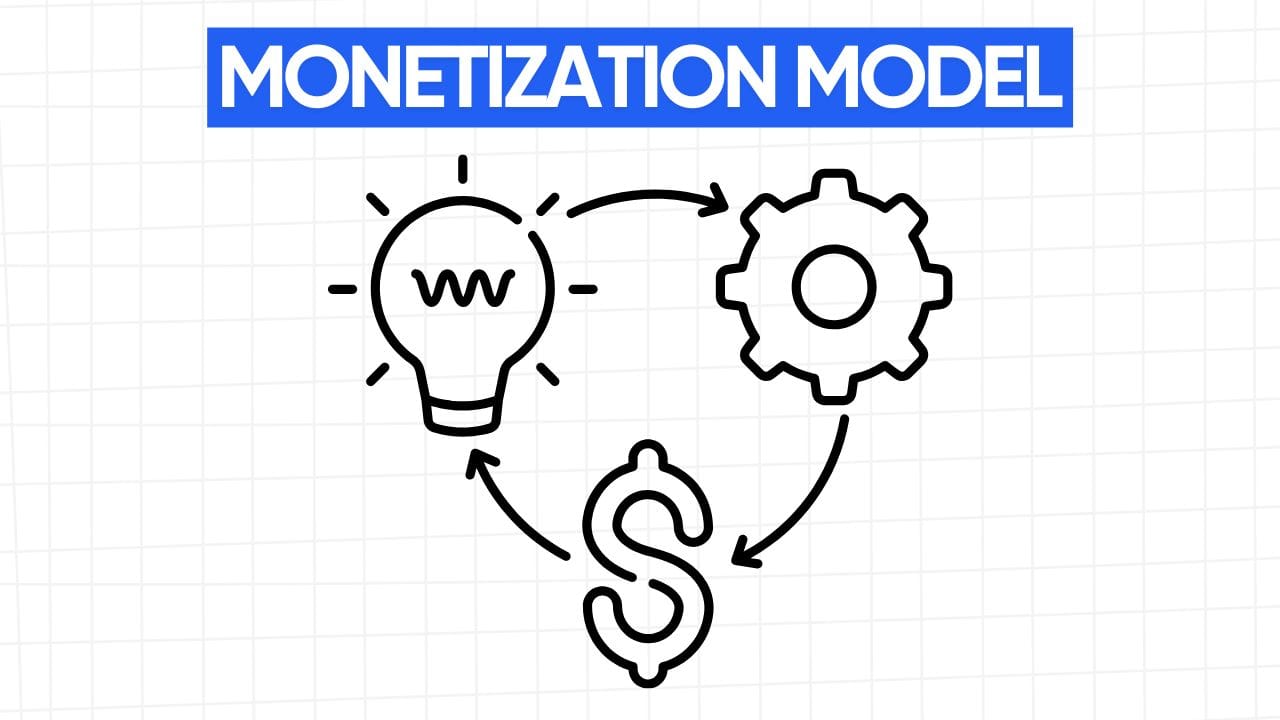
YouTube’s monetization system allows creators to generate income through multiple sources, with AdSense revenue being the most common. However, successful YouTubers often supplement their earnings with alternative methods such as memberships, donations, sponsorships, and affiliate marketing.
Overview of the YouTube Partner Program (YPP)
The YouTube Partner Program (YPP) is the foundation of YouTube monetization.
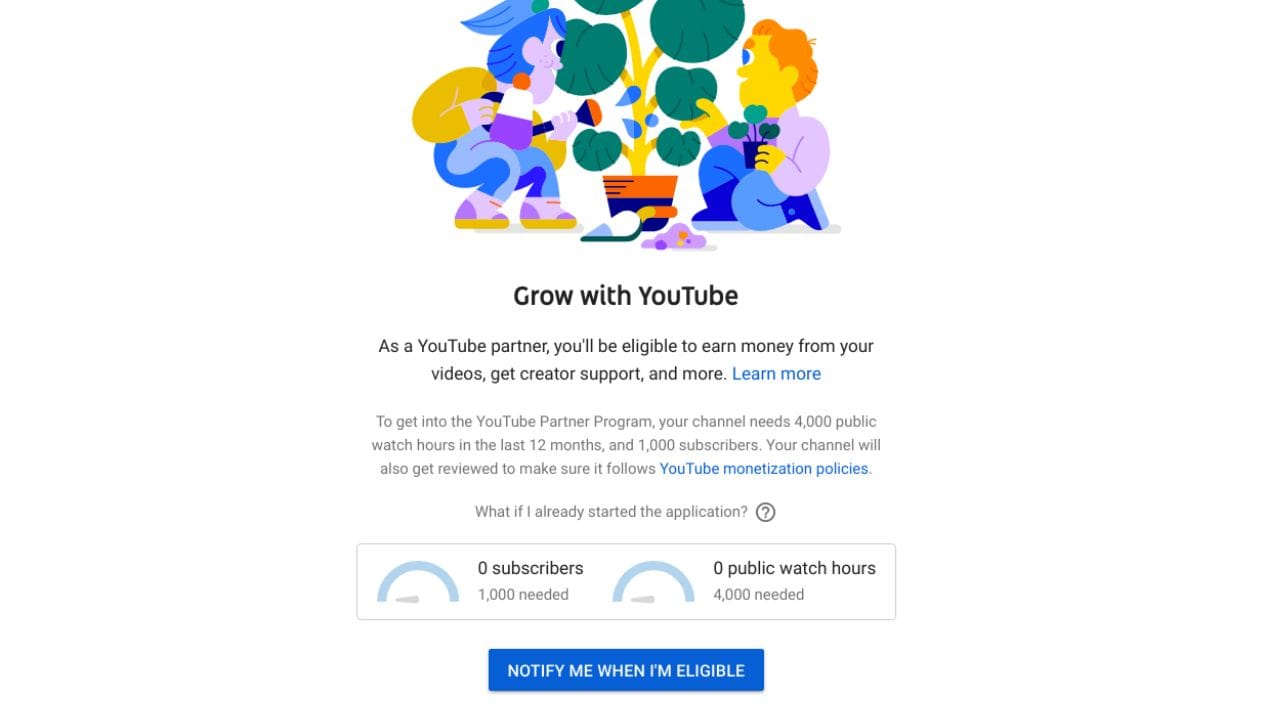
Once a channel meets the eligibility criteria, it gains access to several revenue streams. To qualify, a creator must:
- Have at least 1,000 subscribers
- Accumulate 4,000 watch hours in the last 12 months or 10 million Shorts views in the past 90 days
- Adhere to YouTube’s monetization policies
- Link an AdSense account for payments
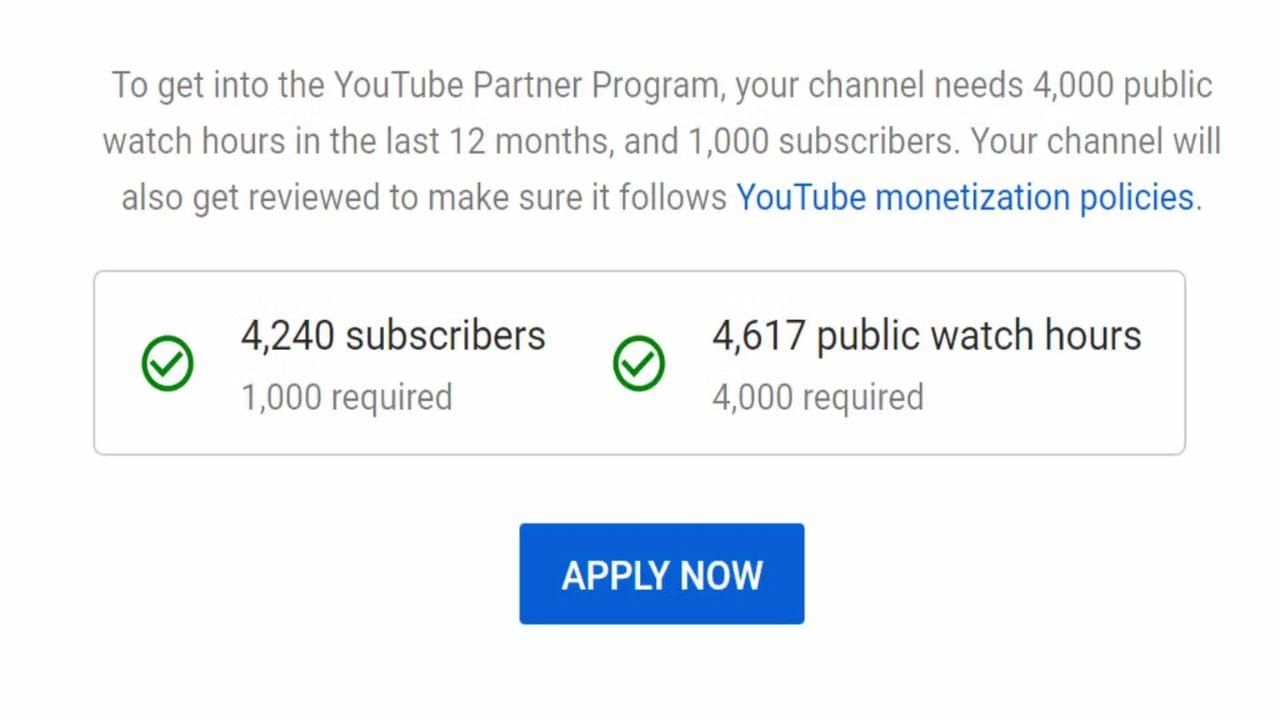
Once approved, creators can start earning money from advertisements, YouTube Premium revenue, and other monetization features.
Breakdown of YouTube Revenue Streams
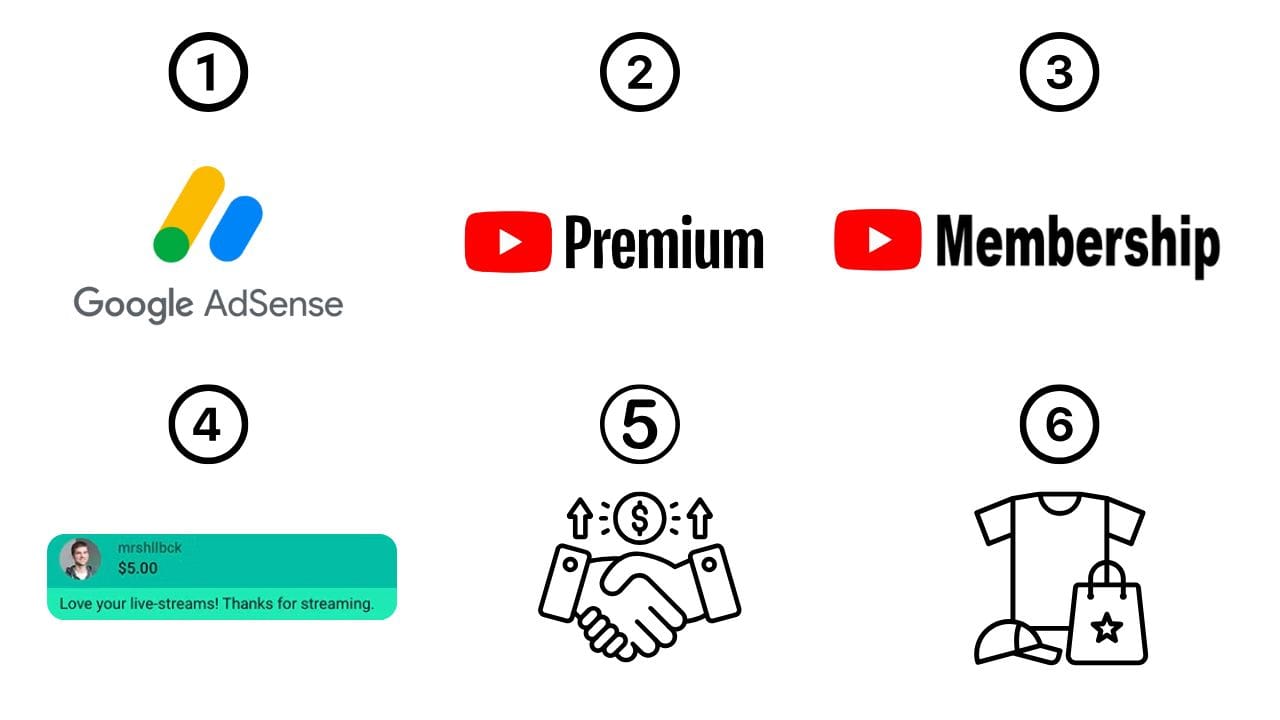
- AdSense Revenue (Ads on Videos)
- YouTube places ads before, during, or after videos, and creators earn a share of the revenue.
- Earnings depend on CPM (advertiser payout per 1,000 impressions) and RPM (actual earnings per 1,000 views).
- YouTube Premium Revenue
- YouTube Premium users pay a monthly subscription fee to watch ad-free content.
- Creators earn a portion of this revenue based on watch time from Premium subscribers.
- Channel Memberships
- Fans can support their favourite creators by subscribing to exclusive content.
- Memberships usually start at $4.99 per month, providing perks like badges, custom emojis, and members-only content.
- Super Chats & Stickers (Livestream Donations)
- Viewers can pay to highlight their comments during a livestream.
- Popular streamers can earn hundreds or even thousands of dollars per stream.
- Sponsorships & Brand Deals
- Companies pay YouTubers to promote products in their videos.
- Sponsorships often bring in significantly more revenue than AdSense, especially in niches like tech, finance, and beauty.
- A mid-sized creator with 1 million subscribers can charge anywhere from $5,000 to $50,000 per sponsored video, depending on engagement and audience demographics.
- Merchandise & Affiliate Marketing
- YouTube allows creators to sell branded products via the Merch Shelf.
- Affiliate marketing generates commissions when viewers buy products through special links in video descriptions.
CPM vs. RPM: Understanding YouTube Ad Revenue
Two key metrics define YouTube ad earnings:

- CPM (Cost Per Mille)
- The amount advertisers pay per 1,000 ad impressions.
- Varies based on niche, seasonality, and audience demographics.
- Example CPM rates:
- Finance: $20 - $40
- Tech: $5 - $12
- Gaming: $2 - $5
- Vlogs/Lifestyle: $3 - $8
- RPM (Revenue Per Mille)
- The actual earnings a creator receives per 1,000 views after YouTube’s 45% cut.
- Typically 40-60% of CPM.
For example:
- A tech channel with a CPM of $10 might have an RPM of $4-$5, earning $4-$5 per 1,000 views.
- A finance channel with a CPM of $30 might have an RPM of $12-$15, earning $12-$15 per 1,000 views.
How Much Does YouTube Pay Per 1,000 Views? (CPM & RPM Examples)
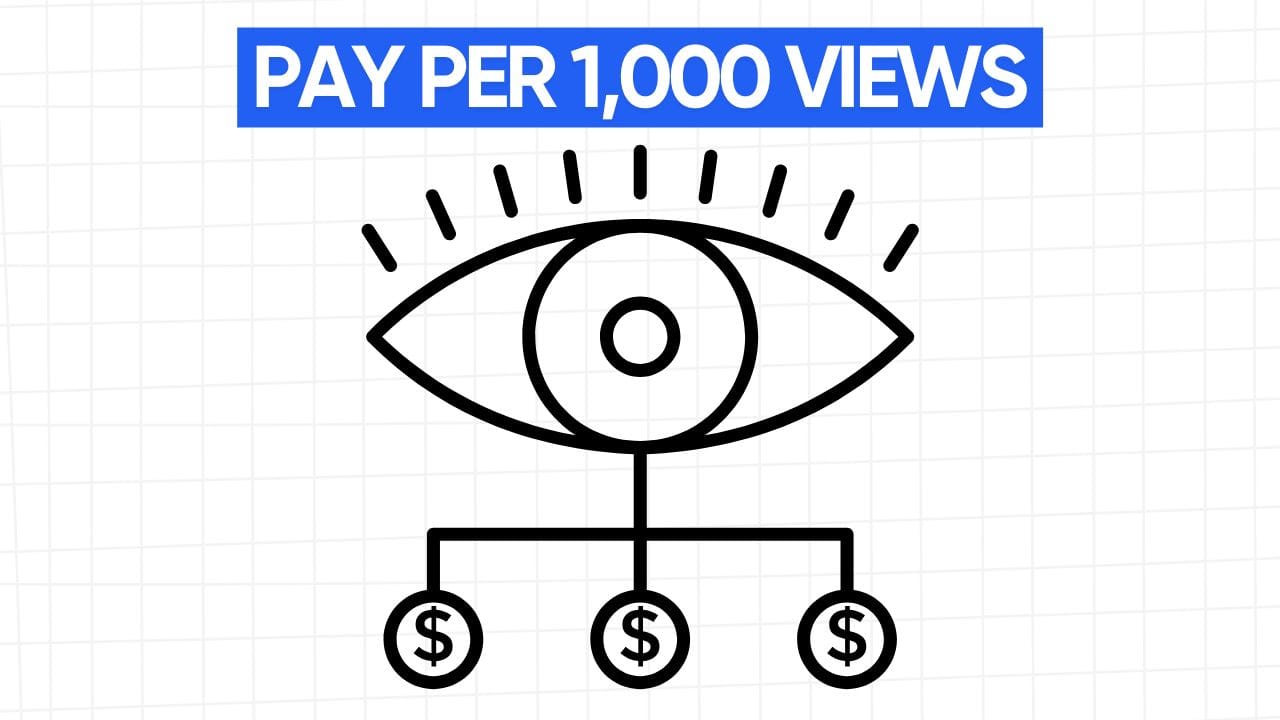
CPM vs. RPM: Understanding Ad Revenue
Many creators focus on CPM (Cost Per Mille), which is the amount advertisers pay per 1,000 ad impressions. However, RPM (Revenue Per Mille) is a more accurate measure of actual earnings, as it reflects the revenue received after YouTube takes its 45% cut.
- CPM - The rate advertisers pay for 1,000 ad impressions.
- RPM - The amount a creator earns per 1,000 views after YouTube's revenue share.
For example, if a gaming channel has a CPM of $4, the RPM might be $1.50-$2 after YouTube takes its cut.
Real Earnings: YouTube Payout Per 1,000 Views by Niche
Here’s a comparison of different niches and their estimated RPMs:
- Gaming - $1.50 - $3.00
- Tech Reviews - $4.00 - $7.00
- Finance & Investing - $12.00 - $20.00
- Vlogs & Lifestyle - $2.00 - $4.00
- ASMR & Relaxation - $1.50 - $2.50
A gaming YouTuber with 1 million views might earn $1,500 - $3,000, while a Business YouTuber with the same views could earn $12,000 - $20,000.
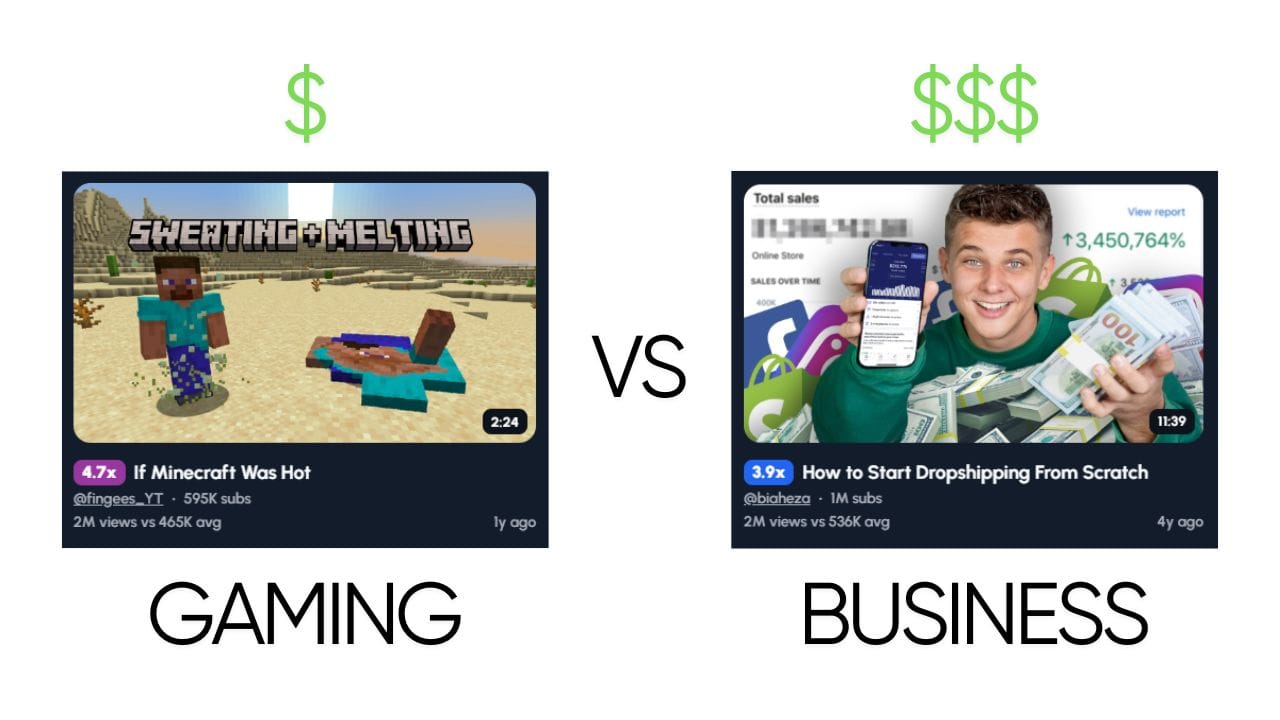
The next section will break down earnings for a YouTube channel with 1 million subscribers, including case studies from different content creators.
Estimated Earnings for a YouTube Channel with 1 Million Subscribers
Estimated Monthly and Yearly Ad Revenue
When a YouTube channel reaches 1 million subscribers, it’s not just the number of subscribers that impacts earnings, view count is also crucial. A channel can see anywhere between 500,000 to 5 million views per month, depending on the content and how engaged the audience is. To break it down, here’s a more detailed look at how the RPM (Revenue Per Mille) affects earnings:
| Niche | RPM (Revenue Per 1,000 Views) | Monthly Views | Monthly Earnings | Yearly Earnings |
|---|---|---|---|---|
| Gaming | $1.50 - $2.50 | 2M | $3,000 - $5,000 | $36,000 - $60,000 |
| Tech/Reviews | $4.00 - $6.00 | 2M | $8,000 - $12,000 | $96,000 - $144,000 |
| Finance | $10.00 - $20.00 | 2M | $20,000 - $40,000 | $240,000 - $480,000 |
| Vlogs/Lifestyle | $2.50 - $4.00 | 2M | $5,000 - $8,000 | $60,000 - $96,000 |
How These Numbers Translate
- Gaming Channel: With an RPM of $1.50 and an average of 2 million views per month, a creator in the gaming niche might earn between $3,000 and $5,000 per month from ad revenue. However, if they experience higher engagement or attract premium advertisers, they could push this number higher. On an annual scale, that's between $36,000 and $60,000.
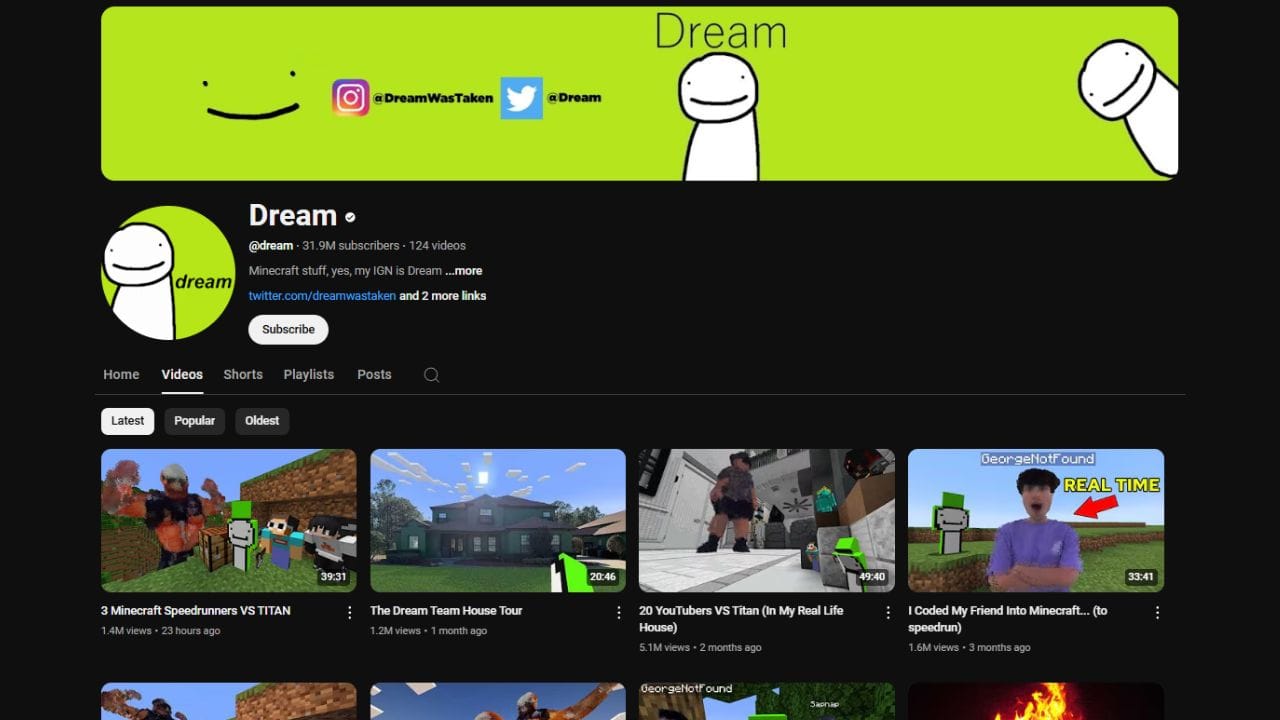
- Tech Channel: A tech channel, which typically has a higher CPM due to premium advertisers looking to target tech enthusiasts, can see much better revenue. If a creator's RPM is around $4.00, 2 million views per month could generate anywhere from $8,000 to $12,000 per month or between $96,000 and $144,000 annually.
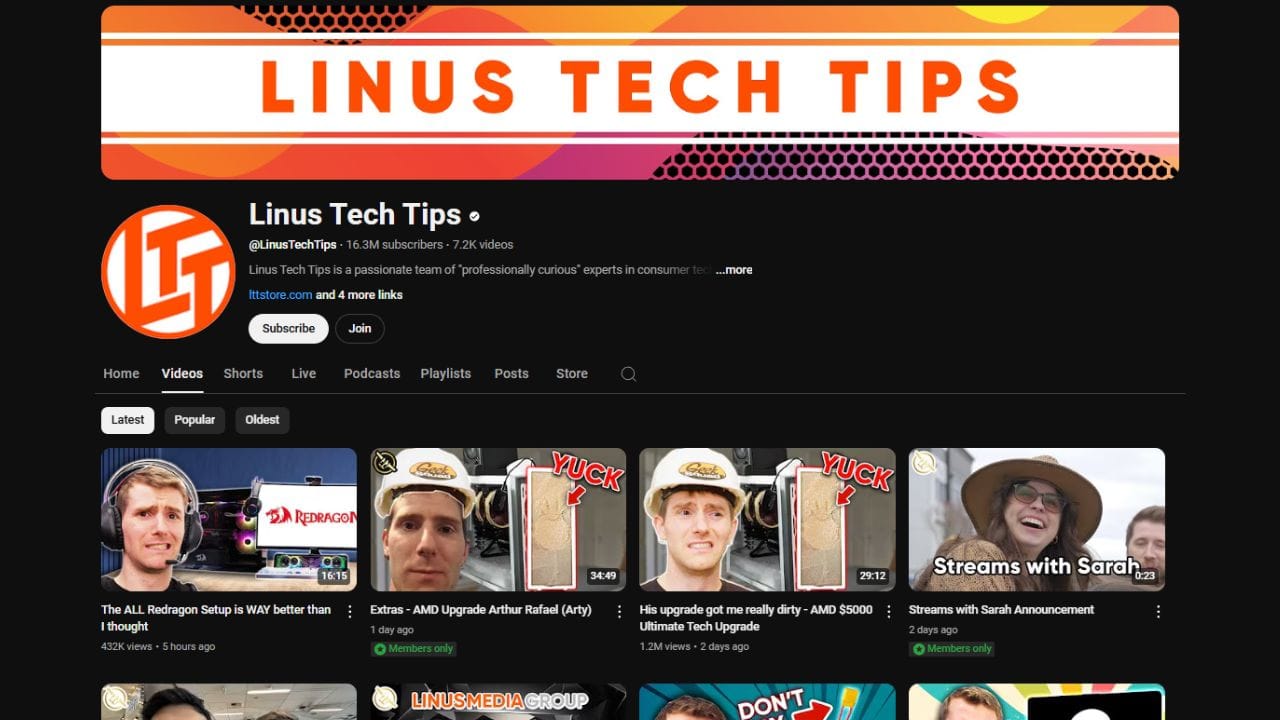
- Finance Channel: Finance channels tend to have the highest CPM rates (sometimes as high as $30 or more during peak seasons), which translates to much higher earnings. For example, a channel in the finance niche might earn between $20,000 and $40,000 per month. On a yearly basis, that could add up to $240,000 to $480,000. Given that financial advice, investment, and cryptocurrency videos attract premium advertisers, these channels can substantially boost their earnings.
![A YouTube channel page screenshot of "Felix & Friends (Goat Academy)" (@FelixFriends) with 253K subscribers. The channel banner shows Felix Prehn with his dog and various financial-themed graphics. The "Videos" tab displays four thumbnails with titles like "A WATCH BEFORE MONDAY 9.30am !! #PLTR #SOFI #TSLA #NVDA #ACHR #RGIT ...," "A 1 Stock to Sell NOW Before It's Too Late! [Buy THIS Instead!]," "BREAKING : FED Just Flipped - Do THIS Before it's too late," and "Why Everybody is WRONG about the Market and FED Pivot." The thumbnails feature Felix Prehn and various financial-related graphics. The video durations range from 18:34 to 42:34. The view counts range from 37K to 67K. The uploads date from 2 to 5 days ago. The words "STOCKS FLIP MONDAY," "SELL ASAP," "IT'S STARTED," and "MAJOR WARNING SIGN FOR 2025" are visible on the thumbnails. The channel also has a "Subscribe" and "Join" button.](https://1of10.com/blog/content/images/2025/03/study-your-graphs--5-.jpg)
- Vlogs and Lifestyle: These channels typically earn less than those in tech or finance but still see significant revenue. With an RPM between $2.50 and $4.00, a channel could expect earnings between $5,000 and $8,000 monthly, which adds up to $60,000 - $96,000 annually.
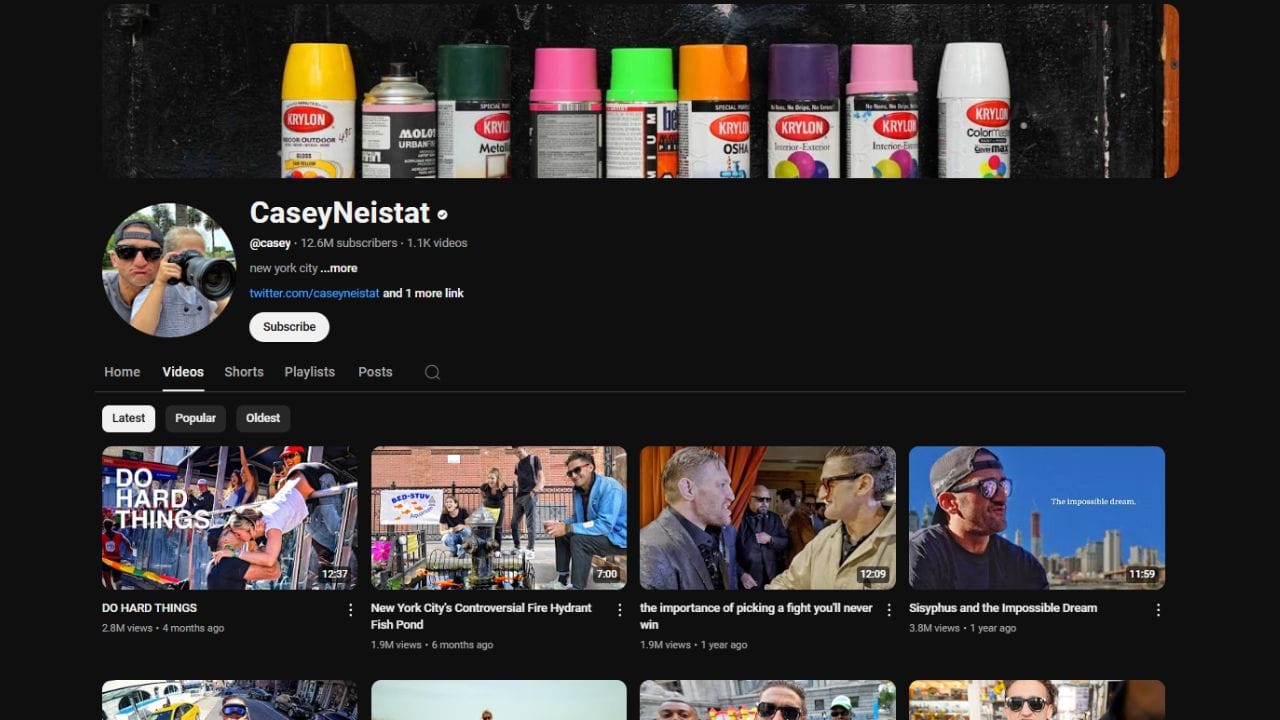
Real-World Examples of YouTuber Earnings
To provide more context, let’s look at some well-known YouTubers and how their earnings can vary even with similar subscriber counts.
Graham Stephan (Finance Channel):
- Subscribers: 1.6 million (as of last check)
- Monthly Earnings: Graham has openly shared that his channel generates over $100,000 per month from ad revenue and sponsorships alone. Since his content is finance-related, his CPM can range from $20 to $40, allowing him to capitalize on a higher-paying niche.
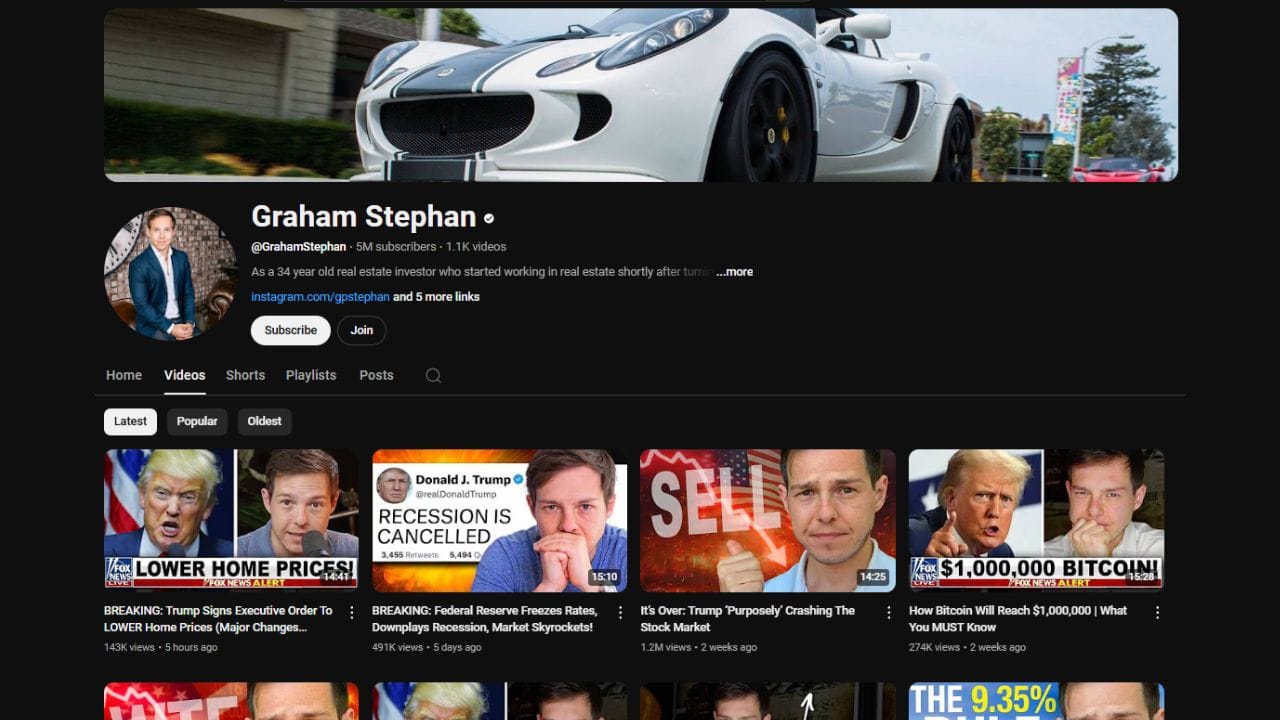
PewDiePie (Gaming/Entertainment):
- Subscribers: Over 100 million (much larger than 1 million, but gives a sense of scale)
- Earnings: Even though PewDiePie earns millions yearly, a mid-range gaming channel with around 1 million subscribers in this niche can still earn between $3,000 and $7,500 per month. With his brand deals, endorsements, and merchandising, his overall monthly income can go well beyond these estimates.
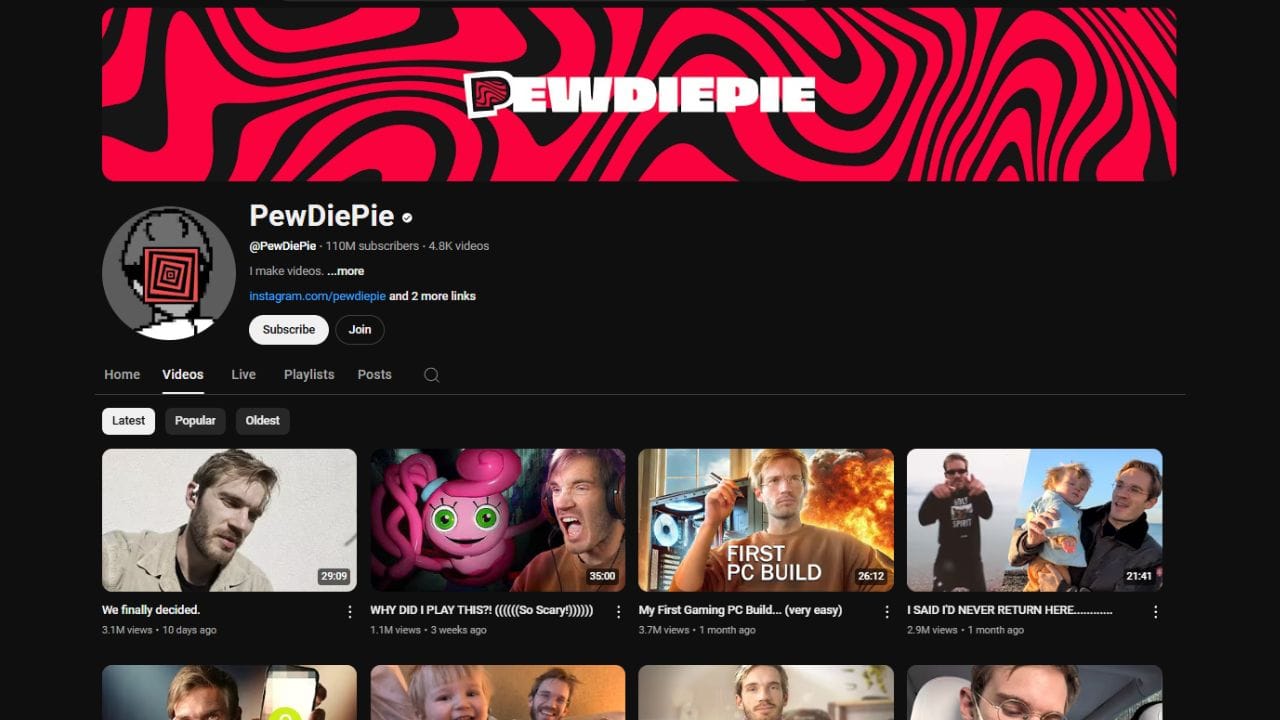
Marques Brownlee (Tech Channel):
- Subscribers: 17 million+
- Monthly Earnings: Marques has publicly shared that his monthly ad revenue can vary between $15,000 to $50,000 per video depending on the tech brand sponsorships. For a creator with 1 million subscribers, similar niche earnings could be expected to be between $8,000 and $15,000 per month.
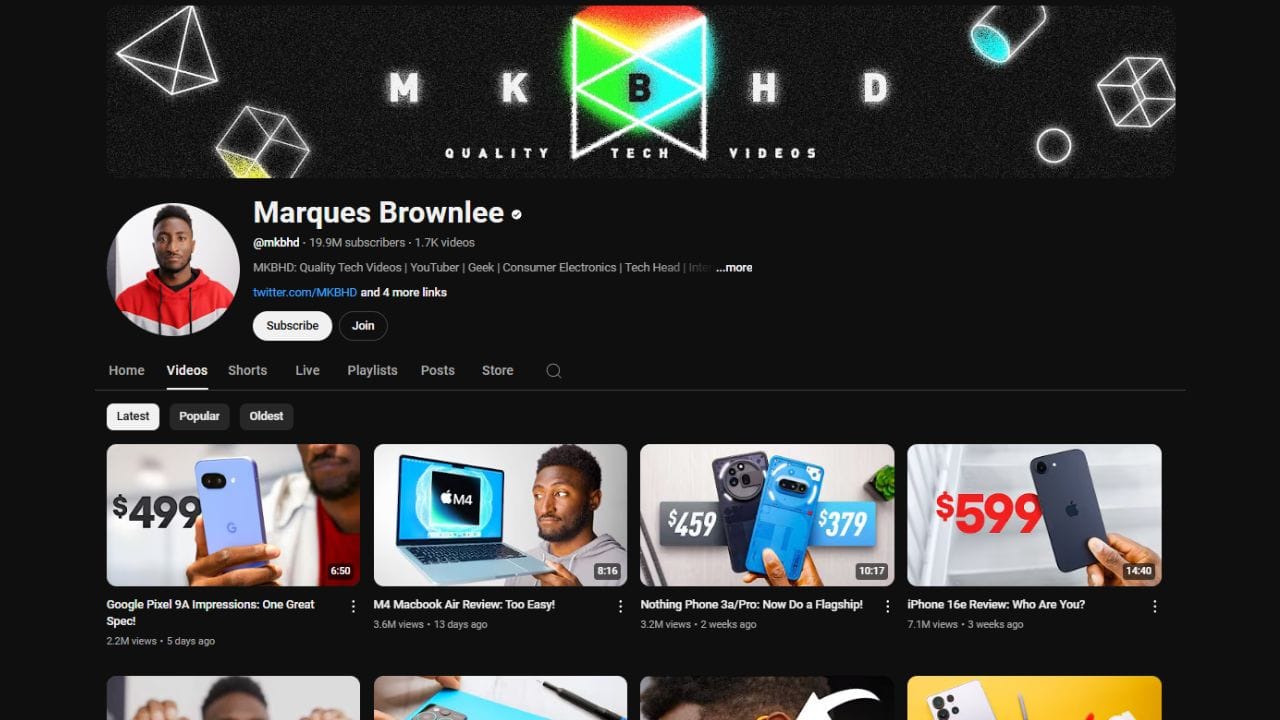
Ali Abdaal (Productivity/Tech):
- Subscribers: 1.5 million
- Monthly Earnings: Ali has shared that his earnings can average about $27,000 per month, a mix of ad revenue, affiliate marketing, and online courses. For someone with 1 million subscribers in a similar niche, you could expect a range of $15,000 to $30,000 monthly.
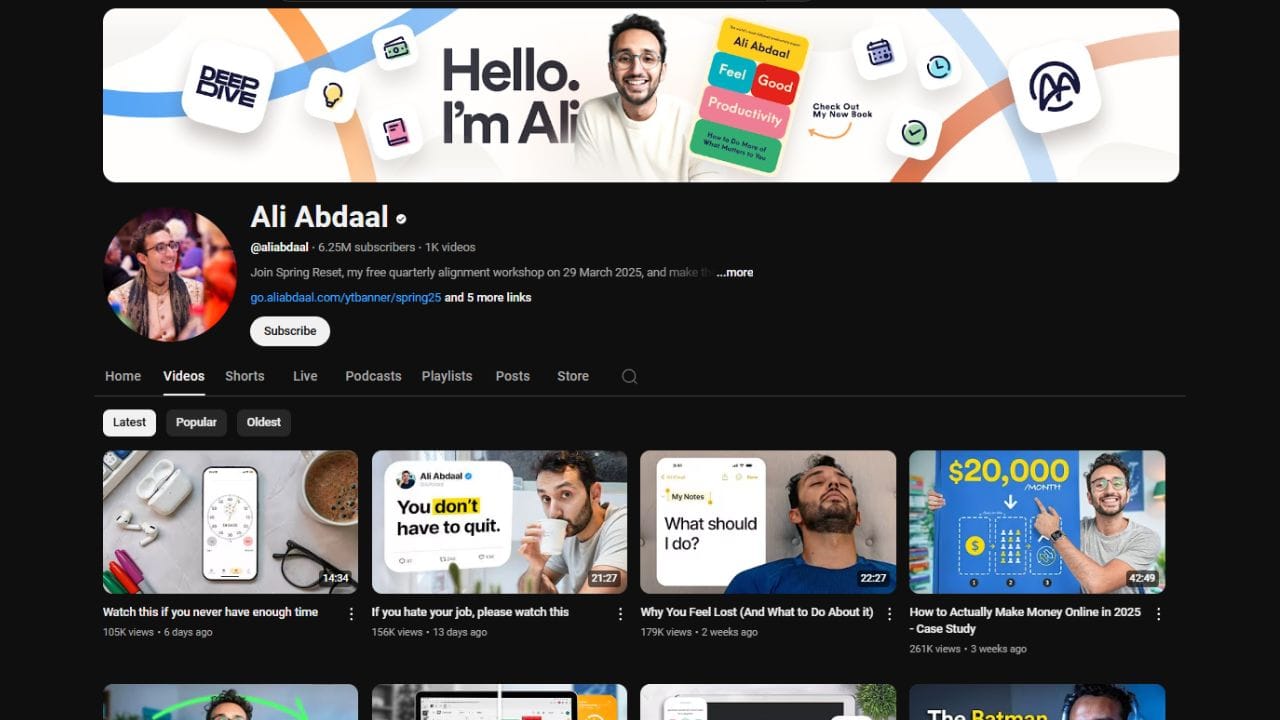
Variations Based on Niche, Engagement, and Upload Frequency
While subscriber count plays a role in earning potential, engagement and video frequency matter just as much, if not more.
- Niche: Channels focusing on high-advertising sectors such as finance, tech, or education can command much higher CPMs than lifestyle, gaming, or vlogs. This discrepancy can lead to a 10x difference in earnings between a creator in a high-paying niche and one in a less lucrative space.
- Video Upload Frequency: The more videos a creator uploads, the more opportunities they have to generate ad revenue. Some channels upload daily, while others upload a few times a week. Consistency in uploads leads to more views and, therefore, higher earnings. However, the quality of content is just as important, audiences will not stay engaged with low-effort videos.
- Engagement: Channels with strong engagement (comments, likes, shares, and watch time) tend to rank better in YouTube’s algorithm, leading to more views and a higher chance of securing lucrative sponsorships. Creators with high engagement also receive more consistent revenue streams. YouTube rewards creators who keep viewers coming back.
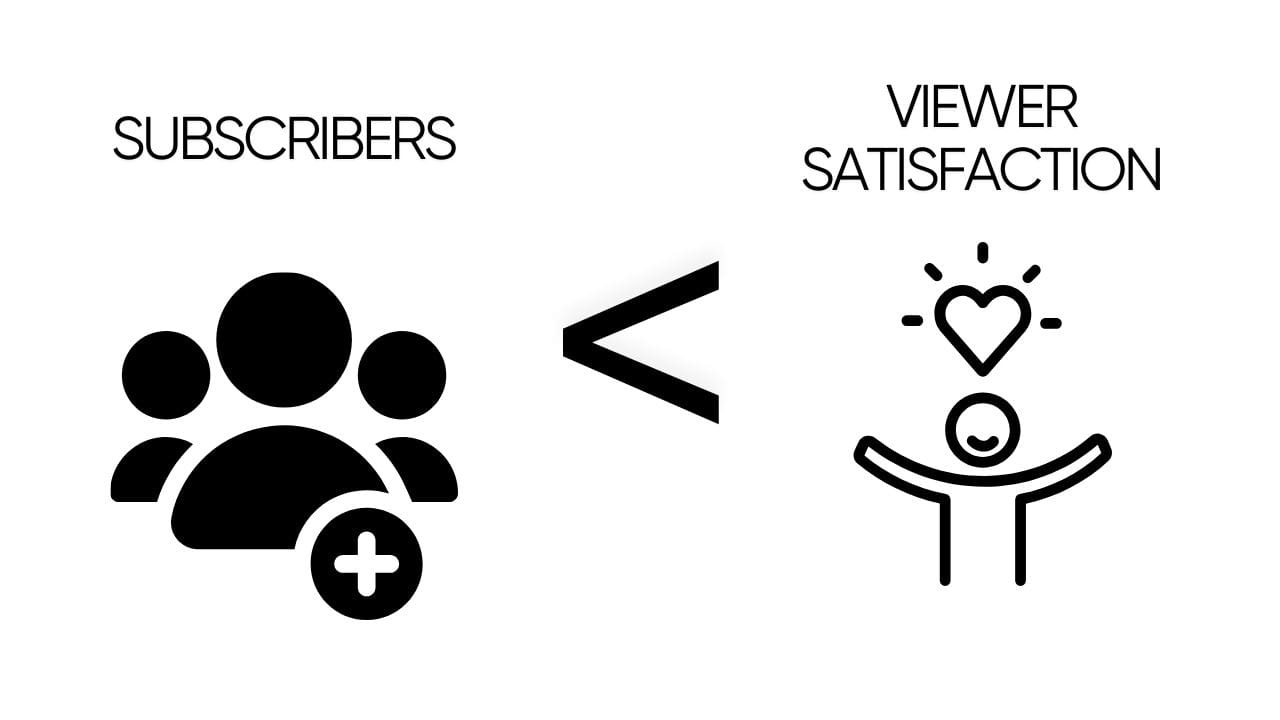
Factors That Can Increase Earnings:
- Sponsored Content: Beyond ad revenue, sponsorships and brand deals can significantly boost earnings. A creator with 1 million subscribers could charge anywhere from $5,000 to $50,000 per sponsored video, depending on the niche, engagement, and audience demographics.
- Super Chats & Memberships: Livestreaming can also increase earnings. Creators like MrBeast (who has significantly more than 1 million subscribers) reportedly make substantial sums from Super Chats, a feature where viewers pay to highlight their comments during live streams. These donations can total hundreds of dollars per stream, especially for popular streamers.
- Merchandise & Affiliate Marketing: The Merch Shelf allows creators to sell branded merchandise directly on YouTube. This adds another layer to earnings beyond ad revenue. Affiliates can also earn commissions by linking products in their descriptions, potentially adding significant revenue.
Other Income Streams for YouTubers (Beyond AdSense)
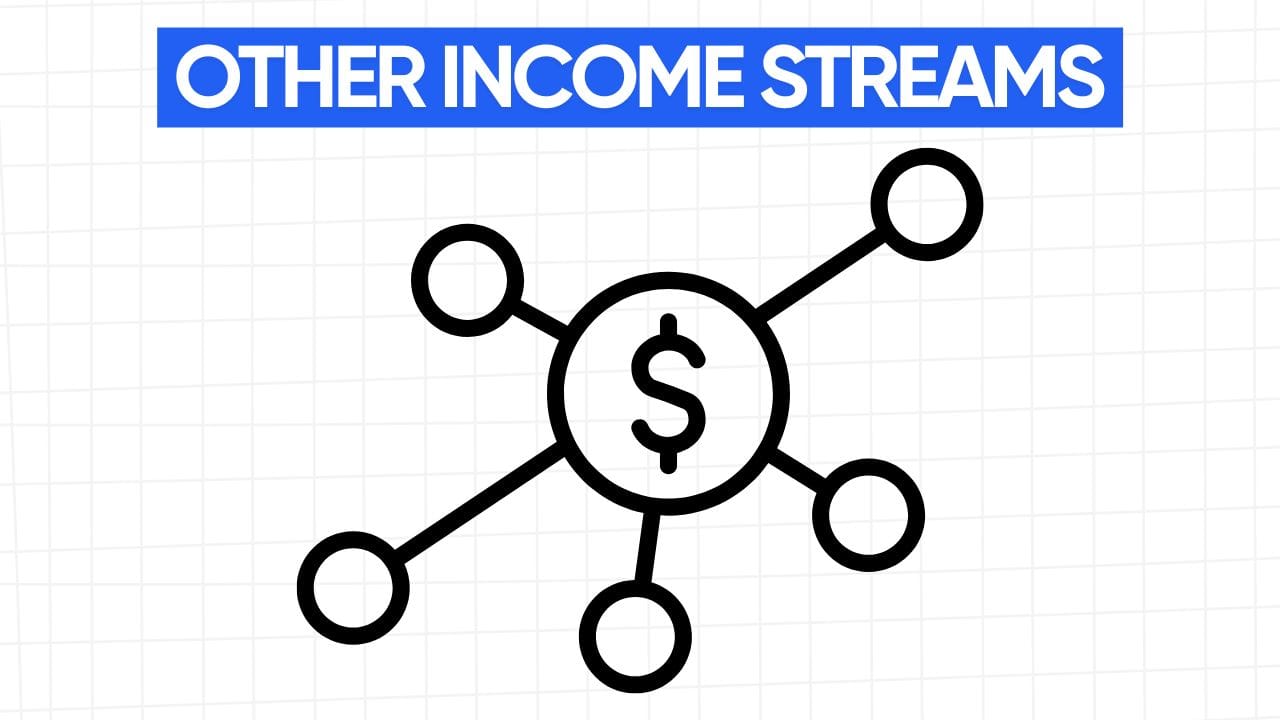
While AdSense revenue is a significant source of income for many YouTubers, it's far from the only way to make money on the platform. Creators who have reached the 1 million subscriber mark often supplement their earnings through various other income streams. By diversifying their revenue sources, YouTubers can significantly increase their earnings potential and make their income more stable. Here’s a breakdown of some of the key income streams that can boost revenue for creators with 1 million subscribers.
1. Sponsorships & Brand Deals
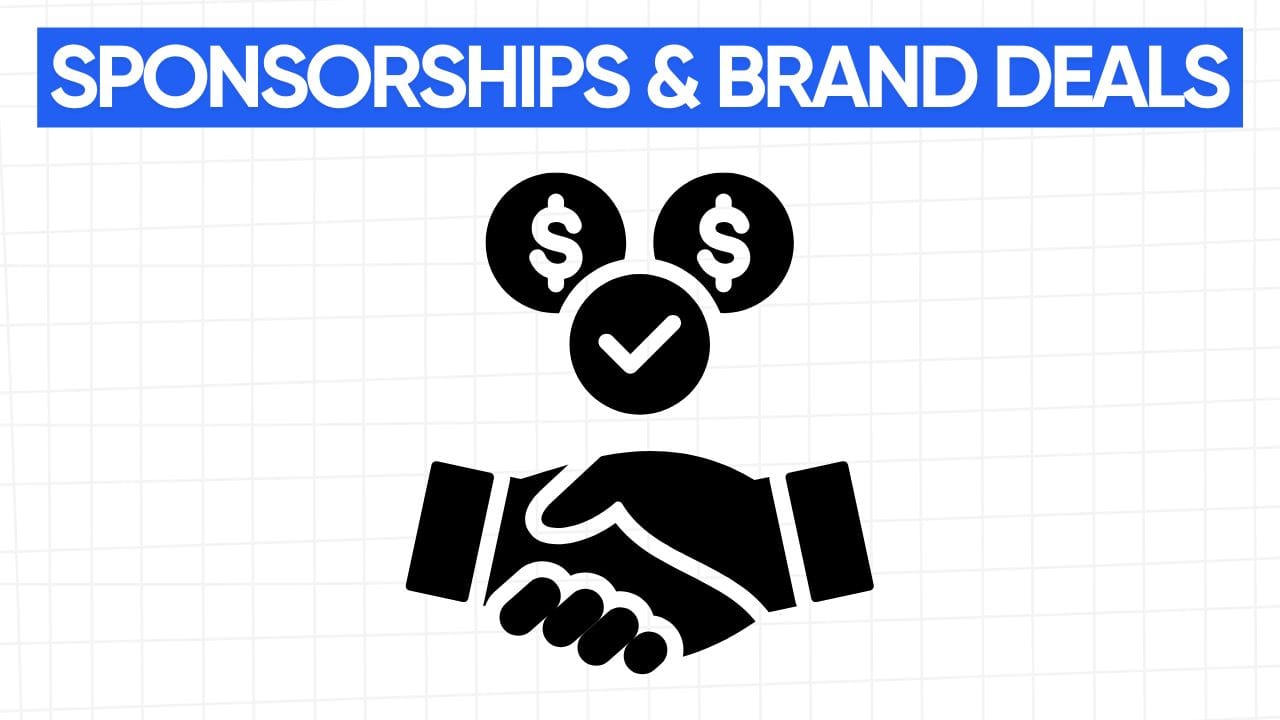
Sponsorships are one of the most lucrative revenue streams for YouTubers, especially for those with large audiences like those with 1 million subscribers. Brands often collaborate with YouTubers to promote their products or services, offering creators a one-time payment or ongoing partnership based on their reach and engagement.
How Much Do Brands Pay for Sponsorships?
The amount a brand pays for a sponsored video depends on various factors such as:
- Niche & Audience: Channels in high-value niches (tech, beauty, finance) tend to command higher fees due to the audience's purchasing power and interest in the brand’s products.
- Engagement & Views: Channels with high engagement rates (likes, comments, shares) and steady viewership tend to get paid more, as their content is more likely to influence purchase decisions.
- Video Type: Sponsored content can vary from simple product mentions to full-fledged, dedicated videos.
For a channel with 1 million subscribers, here are some estimated rates for sponsored content:
- Lower-Engagement/General Niche: $5,000 to $10,000 per sponsored video.
- Higher-Engagement/Tech, Finance, or Beauty Niche: $10,000 to $50,000 per video.
- Top Creators (with very high engagement or in high-demand niches like tech and finance): As much as $100,000+ per video.
Creators typically charge based on their video views and engagement, so more views and higher audience engagement will lead to higher rates. Some channels also negotiate long-term partnerships, which can provide a steady stream of revenue over time.
2. Affiliate Marketing
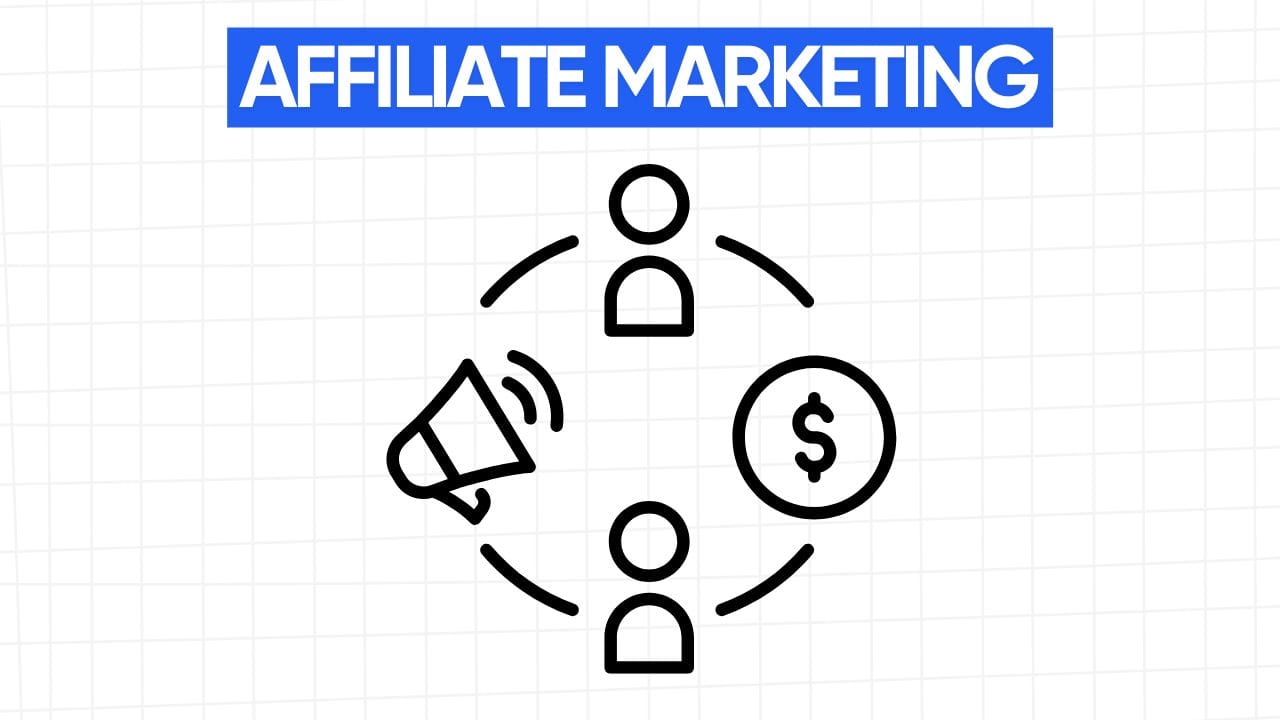
Affiliate marketing is another income stream that allows YouTubers to make money by promoting products and earning a commission on sales made through their referral links. YouTubers can join affiliate programs like Amazon Associates, Skillshare, and other product-specific programs, and place links to products in the video description.
How Affiliate Marketing Works:
- YouTubers provide links to products they recommend or use in their videos.
- Viewers click the link and make a purchase.
- The creator receives a commission, which is typically a percentage of the sale (usually between 5% and 15%, depending on the product).
Example:
A creator in the tech niche with 1 million subscribers might include affiliate links to laptops, smartphones, or camera equipment in their video descriptions. If their viewers make purchases via these links, the creator can earn commissions that can range from a few hundred dollars to several thousand per month, depending on the volume of sales.
For instance:
- If a YouTuber with 1 million subscribers earns $5 per product sold through affiliate links and their videos lead to 10,000 product sales a month, that could result in $50,000 per month from affiliate marketing.
While affiliate marketing doesn’t provide the same steady income as ad revenue, it can be a highly profitable way to monetize videos and can grow alongside a channel's audience and influence.
3. Merchandise & Memberships
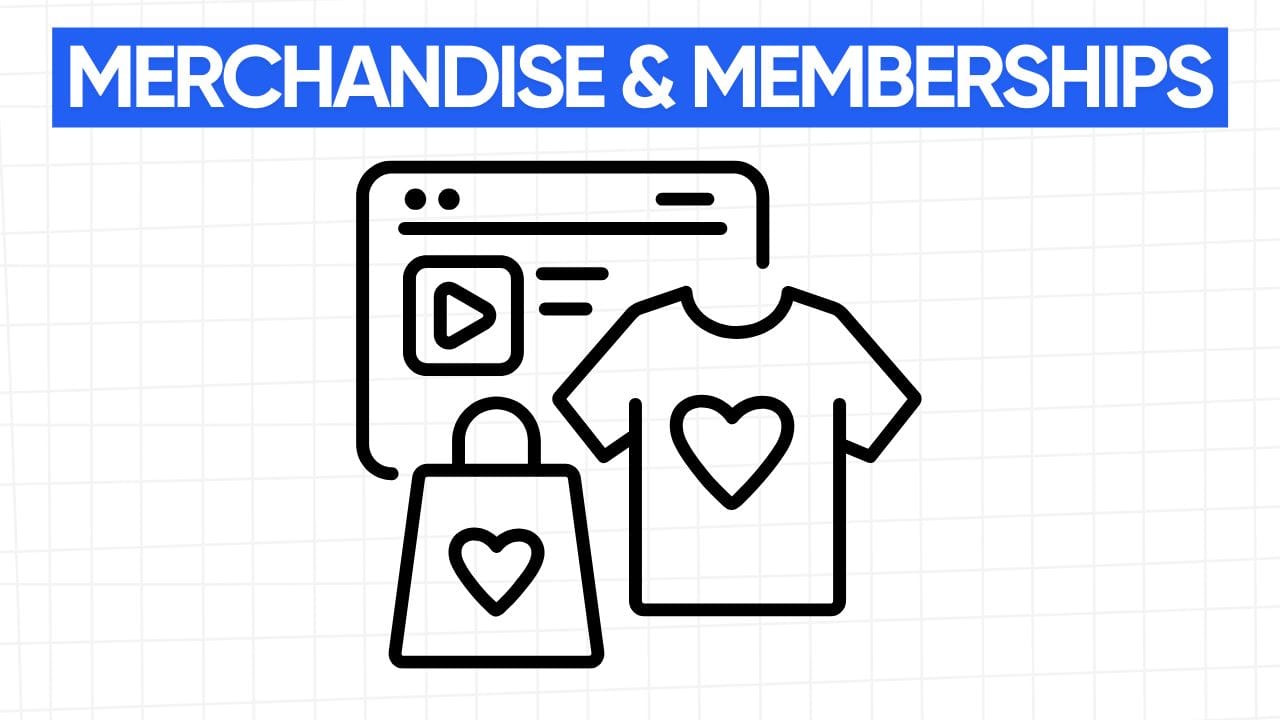
Selling branded merchandise and offering channel memberships can significantly enhance a YouTuber’s revenue. These streams provide creators with an opportunity to directly engage with their audience while capitalizing on their brand and community.
Merchandise Sales
Many YouTubers sell branded merchandise, such as t-shirts, hoodies, mugs, and other products, either through platforms like Teespring, Spreadshop, or directly through the Merch Shelf on YouTube. The benefit of merchandise sales is that they allow creators to profit directly from their community without relying on ad revenue.
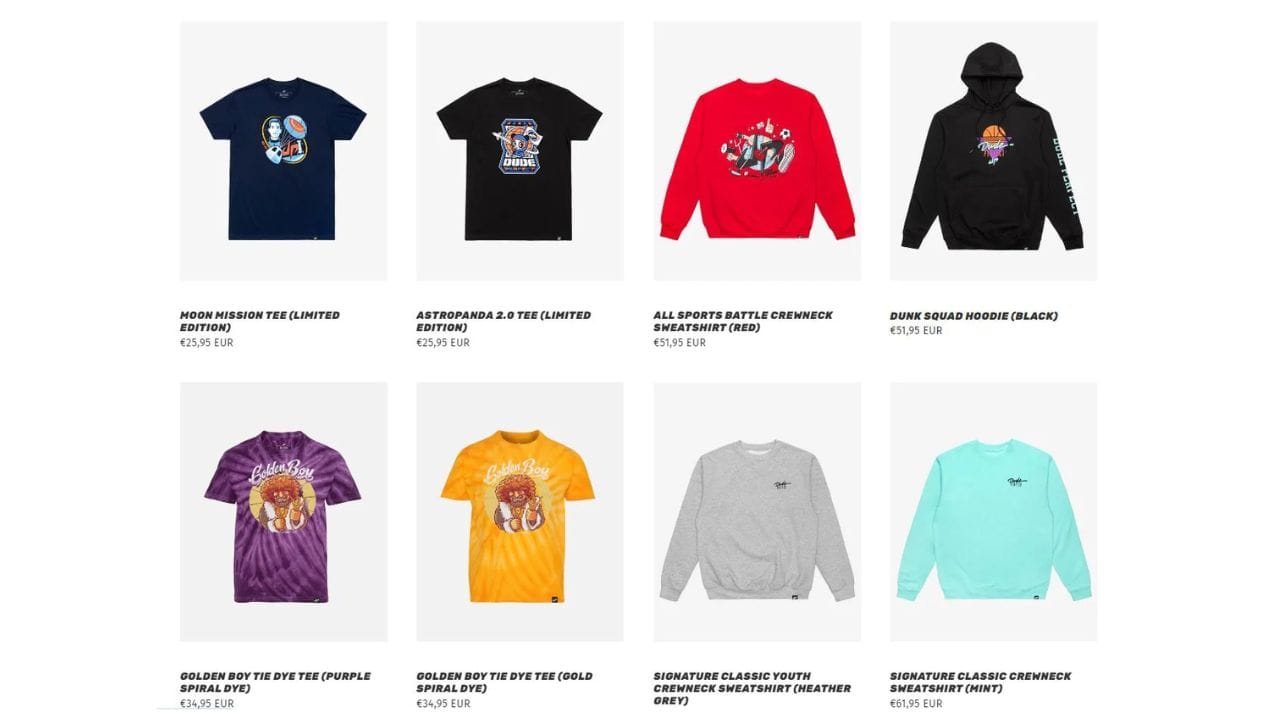
- Revenue Potential: Merchandise can become a steady income source, with 1 million subscribers generating anywhere from $5,000 to $50,000 per month depending on how engaged the audience is and how often products are sold.
For instance:
- A creator could sell 100 shirts a month at $20 each, earning $2,000 monthly just from shirts alone.
- Channels that release exclusive limited-edition collections or frequently drop new products can earn much more.
Channel Memberships
YouTube allows creators to offer channel memberships, where subscribers can pay a monthly fee to access exclusive content, badges, emojis, and other perks. Channel memberships typically start at around $4.99 per month but can vary depending on the creator’s niche and content.
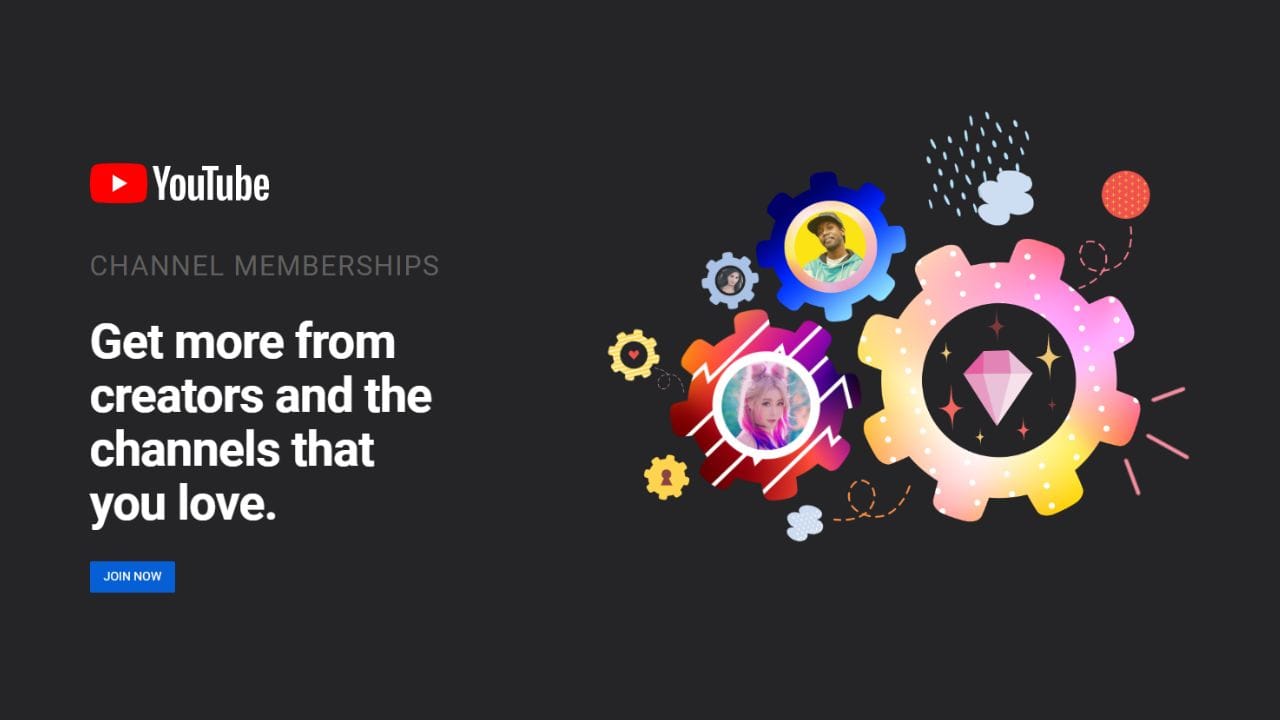
For example:
- If 5% of a YouTuber’s 1 million subscribers sign up for channel memberships at $5 per month, that can bring in $250,000 per month.
Creators also use memberships as a way to offer exclusive content, such as behind-the-scenes videos, livestreams, or early access to videos, encouraging their loyal fans to subscribe.
4. Super Chats & YouTube Premium Revenue
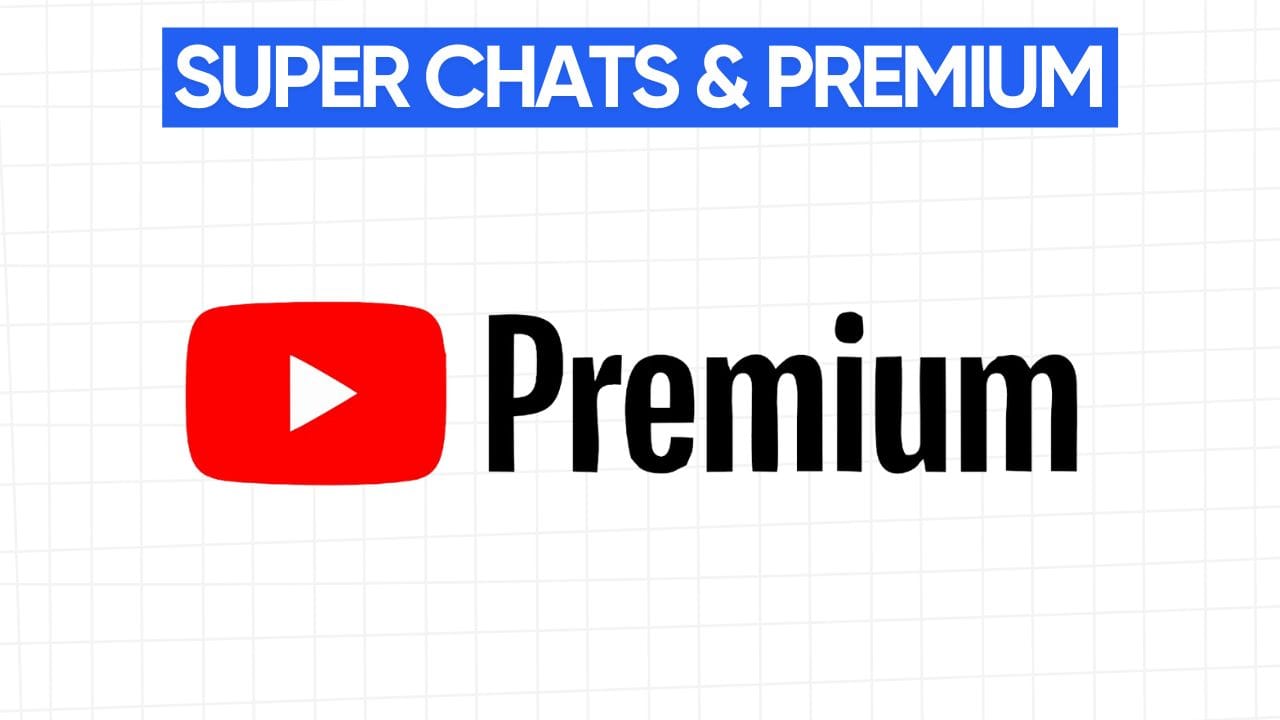
Super Chats
Super Chats are an interactive feature during livestreams, where viewers can pay to have their messages highlighted in the chat. For larger channels, especially those with millions of subscribers, this can be a significant source of income during live broadcasts.
- Super Chat earnings can vary greatly depending on the creator’s popularity, the length of the livestream, and the level of engagement from their audience.
- A channel with 1 million subscribers can earn anywhere from $500 to $5,000 per livestream, with the higher end seen in popular creators with a highly engaged fanbase.
YouTube Premium Revenue
YouTube Premium is a paid subscription service that allows users to watch ad-free videos, stream music, and access other exclusive content. YouTubers earn a portion of YouTube Premium’s subscription fees based on how much Premium members watch their videos.
- YouTube Premium revenue is less predictable than AdSense but adds to a creator's overall earnings. A channel with 1 million subscribers can earn anywhere from $500 to $2,000 per month from YouTube Premium revenue alone, depending on how many Premium subscribers are watching their content.
How to Maximize Your YouTube Earnings with 1 Million Subscribers
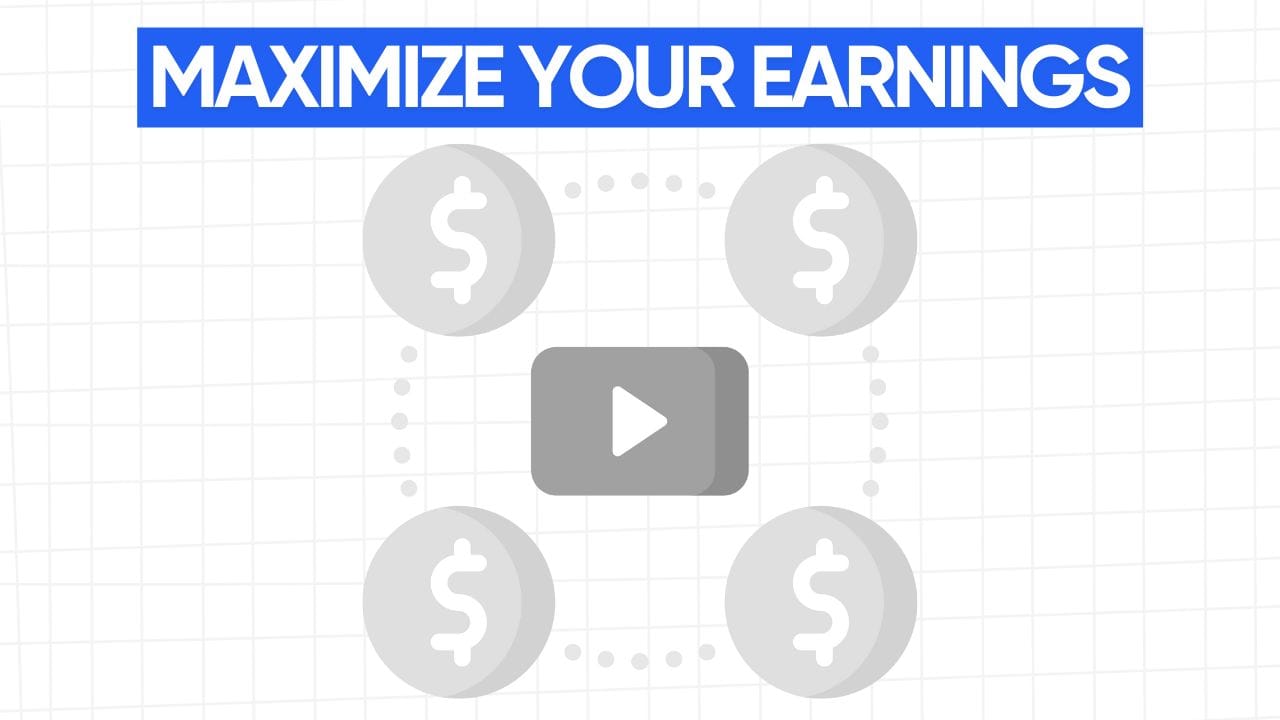
Achieving 1 million subscribers on YouTube is a significant milestone, but the real challenge lies in turning that massive following into sustainable, long-term income. Once a creator reaches this level, there are several strategies that can maximize earnings, whether it's through increasing engagement, optimizing for higher-paying niches, or diversifying income streams. Let’s dive into some effective ways to boost your YouTube revenue even further.
1. Increasing Engagement and Watch Time
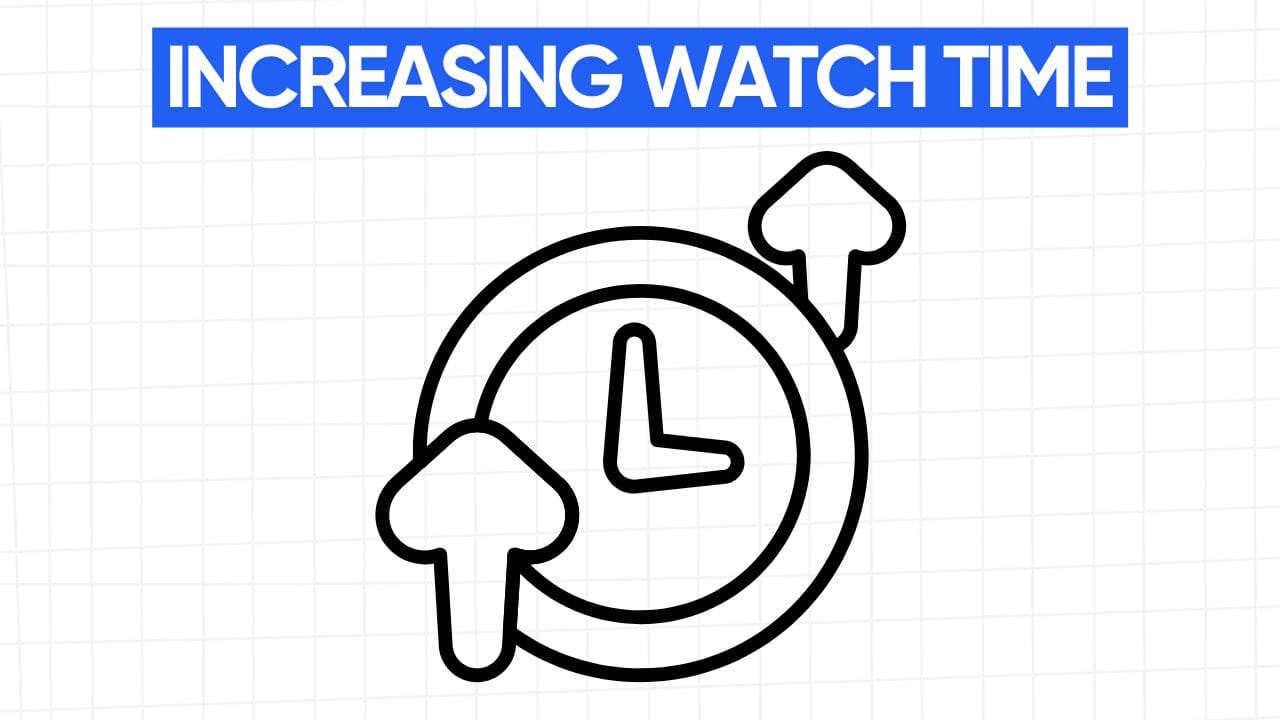
Engagement and watch time are key factors in how YouTube’s algorithm promotes videos. The more viewers engage with your content (through comments, likes, shares, and watch duration), the higher your videos will rank in search results and recommendations. This, in turn, can significantly increase your ad revenue.
Tips to Increase Engagement:
- Create Compelling Thumbnails and Titles: The first thing a viewer notices is your thumbnail and title (so you need to learn how to make a thumbnail that drives clicks and how to write a killer title). Make them visually appealing and attention-grabbing, ensuring they represent the content accurately while sparking curiosity.
- Encourage Viewer Interaction: Ask questions, create polls, or encourage comments and feedback in your videos. Engaging directly with your audience fosters a community and encourages viewers to interact.
- Use Calls to Action: Ask viewers to like, comment, and share your videos, or encourage them to subscribe for more content. These actions increase the likelihood that YouTube will push your video to more people.
- Consistency is Key: Upload regularly. Consistent uploads lead to higher viewer retention and more watch time, which boosts your visibility on the platform. Consider developing a content calendar to plan and maintain a regular upload schedule.
- Longer Videos: While YouTube doesn't penalize shorter videos, longer content (10 minutes or more) can often lead to more watch time and more ad breaks. With increased watch time, YouTube is more likely to recommend your videos to others.
Why Engagement and Watch Time Matter:
- Ad Revenue: Higher engagement leads to better ad impressions and a higher chance of viewers interacting with ads, which increases overall earnings.
- Algorithm Boost: Videos with higher watch time and engagement have a higher likelihood of being recommended by YouTube's algorithm, leading to more views and, ultimately, more revenue.
2. Optimizing for High CPM/RPM Niches
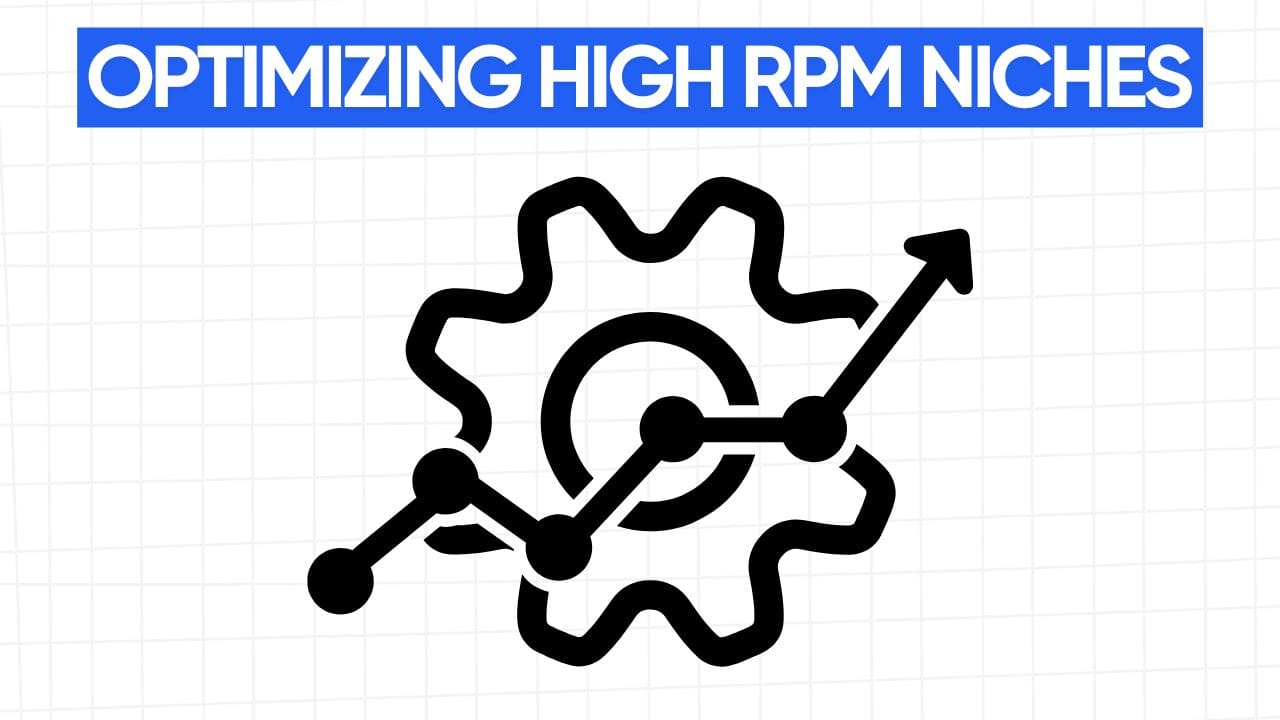
The CPM (Cost Per Mille) and RPM (Revenue Per Mille) are heavily influenced by the niche you create content for. Certain niches attract higher-paying advertisers because they target specific, high-value audiences that are likely to make purchases. By aligning your content with high-CPM niches, you can significantly increase your ad revenue.
High-CPM Niches:
- Finance & Investing: Topics like personal finance, stock trading, cryptocurrency, and investment strategies tend to attract premium advertisers because of the high purchasing power of the audience.
- Technology: Tech reviews, gadgets, and software are also lucrative niches, as tech companies are willing to pay top dollar to promote their products to an engaged audience.
- Health & Wellness: Fitness, mental health, and wellness topics are in high demand and attract companies selling health products, supplements, and fitness equipment.
- Business & Entrepreneurship: Business-related content, including entrepreneurship, marketing, and online business tips, also falls under the high-CPM category.
How to Optimize for High-CPM:
- Targeting Ads: To attract premium advertisers, make sure your content aligns with their target audience. Use YouTube's keyword and topic tools to ensure you're using the right keywords in your video descriptions and titles.
- Create Evergreen Content: Evergreen content (videos that are still relevant long after being published) can bring in consistent views over time, increasing overall ad revenue. Finance and tech content often falls into this category.
- Ad Types: Experiment with different ad formats, such as skippable ads, display ads, and non-skippable ads, to see which ones bring in the most revenue.
Example:
A finance YouTuber with 1 million subscribers might have an RPM of $10 - $20 due to the high value of the finance niche. This creator could generate up to $20,000 - $40,000 per month in ad revenue, depending on their engagement, views, and CPM.
3. Diversifying Income Beyond AdSense
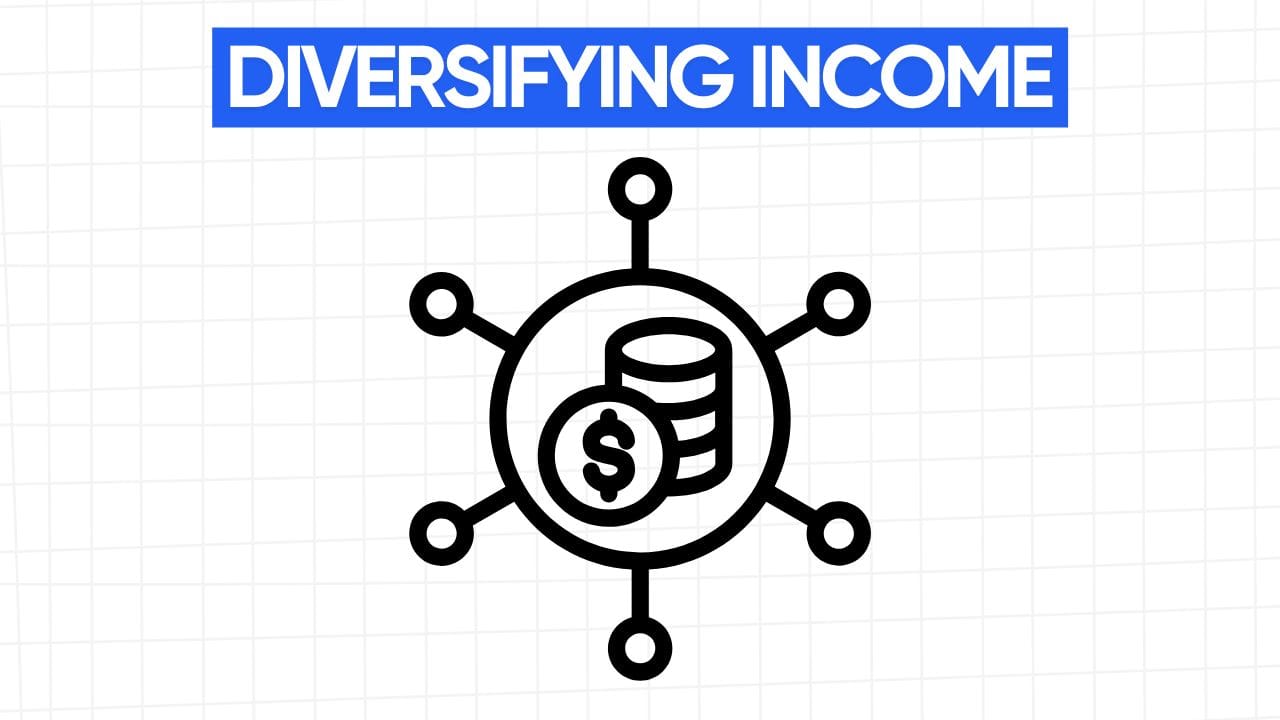
Although AdSense is a reliable source of income, relying solely on ads can be risky and limiting. Diversifying your income streams will provide more financial stability and higher overall earnings. Here are several ways to earn money beyond AdSense:
Sponsorships & Brand Deals
As discussed earlier, brand deals are a significant revenue stream for YouTubers with 1 million subscribers. Many brands are willing to pay top dollar for a sponsorship deal with a creator in their target demographic.
- Reach out to Brands: Don’t wait for brands to come to you. Contact companies related to your niche and pitch collaboration ideas.
- Negotiate Deals: As you grow your audience, you’ll have more leverage to negotiate higher sponsorship fees.
Affiliate Marketing
Promoting affiliate links to products in your video descriptions can be an additional revenue source. Whether it’s through Amazon or niche-specific affiliate programs (e.g., for tech, beauty, or fitness products), creators with 1 million subscribers can generate substantial income from affiliate marketing.
Merchandise Sales
Creating your own branded merchandise is a great way to earn money directly from your audience. With a large following, even a small percentage of your subscribers purchasing your merchandise can result in significant earnings.
Memberships
Channel memberships provide a steady income, as subscribers pay a recurring monthly fee for exclusive content, badges, and perks. Patreon is also another platform where creators can offer premium content for a fee.
Example:
A tech channel with 1 million subscribers can promote affiliate links to tech gadgets in their videos, earn income from merchandise sales, and have $10,000 per month in sponsorships, all adding up to a more diverse income stream.
4. Super Chats & YouTube Premium Revenue
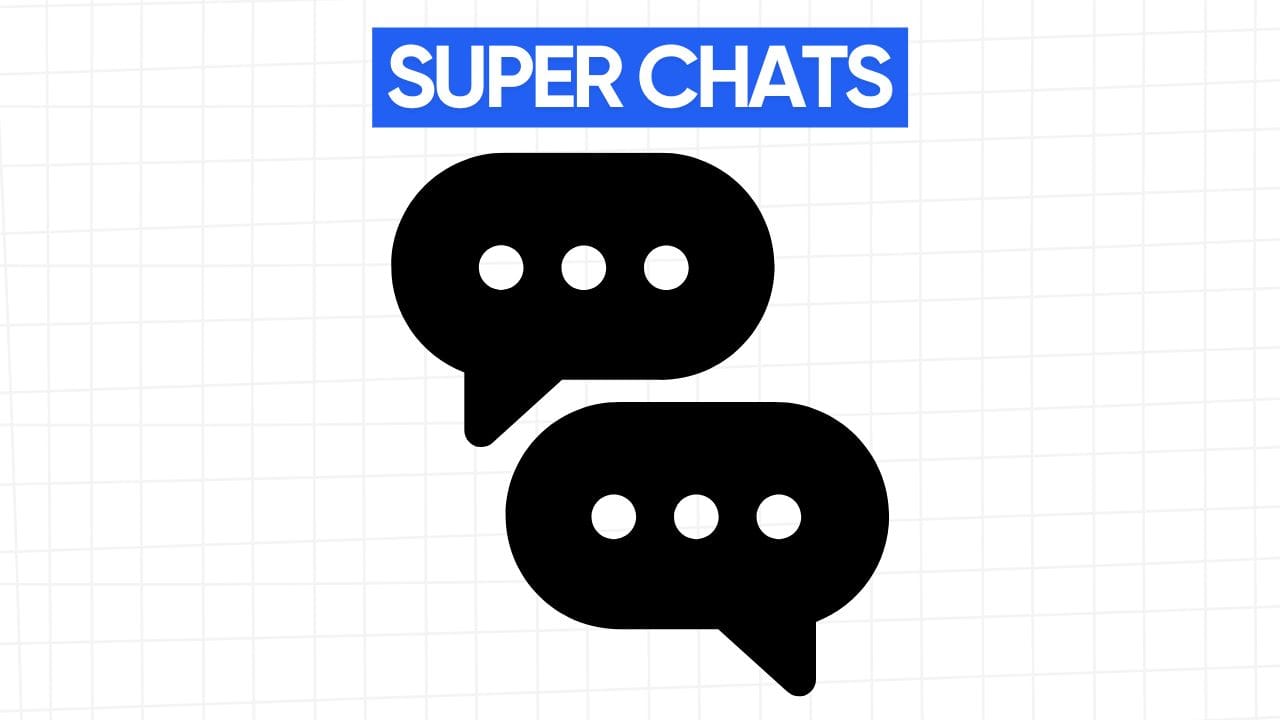
Both Super Chats and YouTube Premium revenue are great opportunities for creators who engage in live streaming or attract a premium audience.
Super Chats
When you live stream, Super Chats allow viewers to pay to have their messages highlighted. For creators with a loyal and engaged audience, Super Chats can significantly boost revenue.
- A creator with 1 million subscribers could make anywhere from $500 to $5,000 per livestream in Super Chats, depending on the engagement level.
YouTube Premium Revenue
Creators also earn a share of YouTube Premium subscriptions. YouTube Premium subscribers pay for ad-free content, and creators are compensated based on how much their content is consumed by Premium users.
- A channel with 1 million subscribers might earn anywhere from $500 to $2,000 per month from YouTube Premium revenue, based on the number of Premium members watching their videos.
Example:
A gaming YouTuber with 1 million subscribers could earn an additional $2,000 per month through Super Chats and $1,500 per month from YouTube Premium, boosting overall monthly income.
How Much Popular YouTubers Make with 1 Million Subscribers
Reaching 1 million subscribers on YouTube is a major achievement, and many creators at this level share insights into how much they actually earn. While exact numbers vary widely due to factors like niche, engagement, and monetization strategies, we can gain valuable insights by looking at real-world examples. Here, we’ll explore how popular YouTubers from different niches make money with 1 million subscribers, offering some transparency into their revenue streams and giving a clearer picture of what creators can expect.
1. Case Study: Tech YouTuber - MKBHD

Channel: MKBHD (Marques Brownlee)
Niche: Technology (Tech Reviews, Gadgets, Electronics)
Subscribers: 1 Million+ (currently well over 15 million subscribers)
Marques Brownlee, one of the most well-known tech YouTubers, has built a brand around reviewing cutting-edge gadgets, technology news, and product comparisons. While Marques is well beyond 1 million subscribers, his early-stage earnings are representative of what creators in the tech niche can expect when they hit 1 million.
Estimated Earnings Breakdown:
- AdSense Revenue: For a channel like MKBHD, tech content tends to attract a high CPM due to the high-value nature of the audience (tech-savvy individuals with a greater willingness to purchase). A channel like this could earn $10,000 to $20,000 per month in ad revenue, with an RPM ranging from $5 to $15 depending on video performance and CPM rates.
- Sponsorships: Tech brands often pay a premium to have their products reviewed or featured. Marques could easily earn $25,000 to $50,000 per sponsored video.
- Affiliate Marketing: MKBHD likely promotes tech products using affiliate links. For instance, if his followers purchase tech products through links, Marques could earn a commission anywhere from $1,000 to $5,000+ a month, depending on the sales volume.
- Merchandise: Marques has a line of branded merchandise (t-shirts, caps, etc.). Sales from merchandise can vary, but for a popular channel like MKBHD, even modest merchandise sales can bring in $5,000 to $10,000 per month.
- Super Chats & YouTube Premium: Since MKBHD is not particularly known for live streaming, Super Chats are likely a minimal income stream, but YouTube Premium would bring in steady earnings, likely ranging from $1,000 to $3,000 per month.
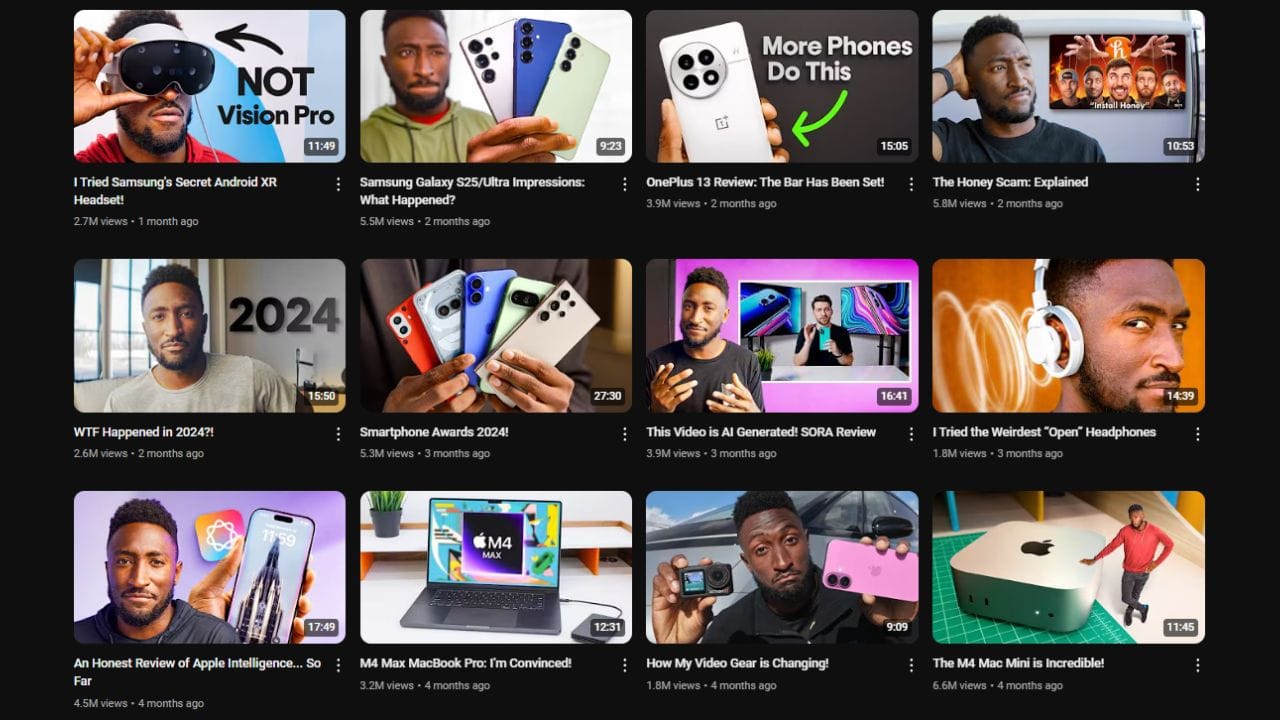
Overall Monthly Revenue Estimate (For Channels With 1M+ Subscribers):
- AdSense: $10,000 to $20,000
- Sponsorships: $25,000 to $50,000 (per video)
- Affiliate: $1,000 to $5,000
- Merchandise: $5,000 to $10,000
- Super Chats & YouTube Premium: $1,000 to $3,000
This brings MKBHD’s potential earnings to $42,000 to $88,000 in a good month, although these numbers can fluctuate based on the video’s popularity and the effectiveness of his sponsorship deals.
2. Case Study: Beauty YouTuber - Jeffree Star

Channel: Jeffree Star
Niche: Beauty, Makeup Tutorials, Fashion
Subscribers: 1 Million+ (currently well over 15 million subscribers)
Jeffree Star, a leading beauty influencer, is another example of a YouTuber who successfully monetized his 1 million subscriber milestone and beyond. While Jeffree’s success is tied to his iconic persona and high-quality beauty tutorials, his strategy for income generation can be dissected to help others understand how to maximize earnings.
Estimated Earnings Breakdown:
- AdSense Revenue: Beauty content can vary in CPM, but Jeffree’s high engagement and targeted audience likely allow for an RPM range of $5 to $12. In months with steady viewership, his channel could bring in $5,000 to $12,000 in AdSense revenue.
- Sponsorships: Sponsorships for beauty influencers are highly lucrative. Major makeup and skincare brands frequently work with Jeffree, paying him $15,000 to $30,000+ per video for a product review or tutorial.
- Affiliate Marketing: Jeffree’s affiliate income would come from links to the beauty products he reviews. These can vary significantly, but with his audience size and influence, he could earn anywhere from $3,000 to $10,000+ per month through affiliate links.
- Merchandise: Jeffree Star’s cosmetic line, Jeffree Star Cosmetics, is a huge revenue source. It’s safe to assume that even with 1 million subscribers, merchandise sales and product line profits could easily be $50,000 to $100,000 per month, or more, depending on the season and product launches.
- Super Chats & YouTube Premium: Jeffree Star doesn’t heavily rely on Super Chats as he focuses more on product launches and collaborations. However, his YouTube Premium revenue could still contribute $1,500 to $5,000 per month from loyal subscribers.
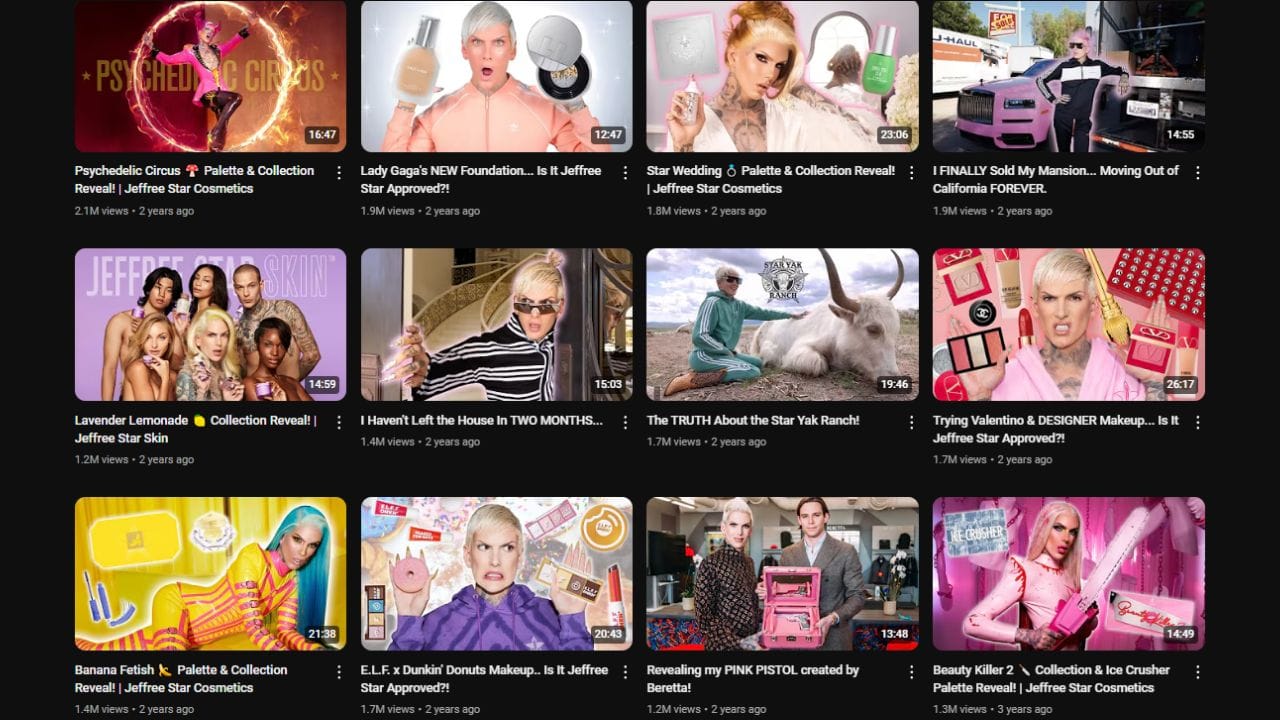
Overall Monthly Revenue Estimate (For Channels With 1M+ Subscribers):
- AdSense: $5,000 to $12,000
- Sponsorships: $15,000 to $30,000
- Affiliate: $3,000 to $10,000
- Merchandise: $50,000 to $100,000
- Super Chats & YouTube Premium: $1,500 to $5,000
This gives Jeffree Star a potential monthly earning range of $74,500 to $157,000+ depending on the month and product sales.
3. Case Study: Gaming YouTuber - PewDiePie

Channel: PewDiePie (Felix Kjellberg)
Niche: Gaming, Commentary, Memes
Subscribers: 1 Million+ (currently well over 100 million subscribers)
PewDiePie, one of the most famous YouTubers in history, has shown how a unique content strategy can lead to tremendous success. While he now has far more than 1 million subscribers, his early days are a great example of how to monetize gaming content effectively.
Estimated Earnings Breakdown:
- AdSense Revenue: Gaming content tends to have a lower CPM than niches like finance or tech. PewDiePie could have earned $5,000 to $10,000 per month in AdSense, even in his early days with 1 million subscribers.
- Sponsorships: As PewDiePie became more popular, sponsorships grew, with gaming brands and non-endemic companies keen to collaborate. PewDiePie could have earned $20,000 to $40,000 per sponsored video.
- Affiliate Marketing: Like many gaming channels, PewDiePie could have promoted video game sales or merchandise through affiliate links, earning around $1,000 to $5,000 per month.
- Merchandise: PewDiePie’s iconic brand led to merchandise like shirts, mugs, and other products. Merchandise earnings can vary, but with 1 million subscribers, PewDiePie could have earned $10,000 to $25,000 per month.
- Super Chats & YouTube Premium: PewDiePie frequently does live streams where Super Chats are an important revenue stream. In the early stages, he might have earned $500 to $3,000 per stream in Super Chats, with YouTube Premium contributing around $1,000 to $3,000 per month.
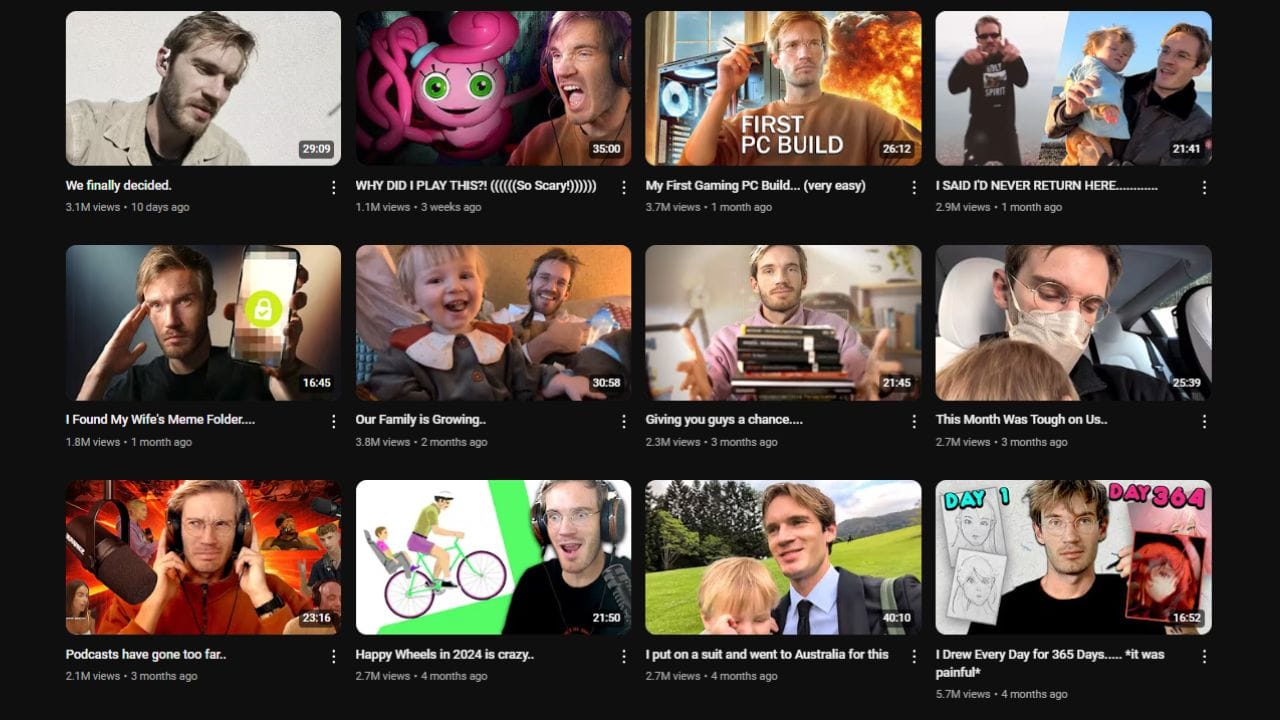
Overall Monthly Revenue Estimate (For Channels With 1M+ Subscribers):
- AdSense: $5,000 to $10,000
- Sponsorships: $20,000 to $40,000
- Affiliate: $1,000 to $5,000
- Merchandise: $10,000 to $25,000
- Super Chats & YouTube Premium: $1,500 to $5,000
PewDiePie could have made anywhere from $37,500 to $85,000 monthly, even in his early years with 1 million subscribers.
Is 1 Million Subscribers Enough to Make a Living on YouTube?
Reaching 1 million subscribers on YouTube is a monumental achievement, but is it enough to make a full-time living from the platform? The short answer is yes, but with some nuances to consider. Let’s quickly revisit some key takeaways to help you understand how 1 million subscribers can be a solid foundation for YouTube success.
Key Points to Remember:
- Monetization Model Overview: The YouTube Partner Program (YPP) provides multiple avenues to earn revenue, including AdSense, Super Chats, memberships, and sponsorships. With 1 million subscribers, creators are in a strong position to tap into these revenue streams.
- Diversified Income Streams: Beyond AdSense, YouTubers can increase their earnings through sponsorships, affiliate marketing, and merchandise. In fact, most successful creators with 1 million subscribers don't rely solely on ads, they supplement their income with brand deals, merchandise sales, and partnerships.
- CPM and RPM: The Cost Per Mille (CPM) and Revenue Per Mille (RPM) can vary depending on the niche, but YouTubers in higher-value sectors like tech, finance, and beauty often earn higher CPMs. Channels with more views and engagement can expect better revenue.
- Super Chats and YouTube Premium: If you live-stream or have an engaged fanbase, Super Chats and YouTube Premium can contribute to your earnings. While this is often a secondary income stream, it can still provide substantial revenue for channels with active audiences.
- Real-World Examples: As we’ve seen from creators like MKBHD, Jeffree Star, and PewDiePie, YouTubers with 1 million subscribers can earn anywhere from $30,000 to $150,000+ per month, depending on their content strategy, engagement, and monetization approach.
Conclusion
For many creators, 1 million subscribers can definitely be enough to make a living, especially if you diversify your income. AdSense alone may not always generate enough revenue to quit a day job, but once you add sponsorships, affiliate income, and product sales into the mix, the earning potential increases significantly. Many creators earn more from their brand deals and merchandise than they do from ads.
However, it’s also worth noting that revenue can vary. A channel with 1 million subscribers focused on a niche with lower CPM (e.g., gaming, vlogging) may earn less than a channel with a high-CPM niche (e.g., finance, tech). But the key takeaway is that diversification is the secret to long-term success and sustainability.
For those hoping to turn YouTube into a full-time career, engagement and community-building will be your best tools. Building loyal fans who are willing to support through memberships, Super Chats, or merchandise purchases will enhance your revenue streams far beyond what AdSense can provide.
